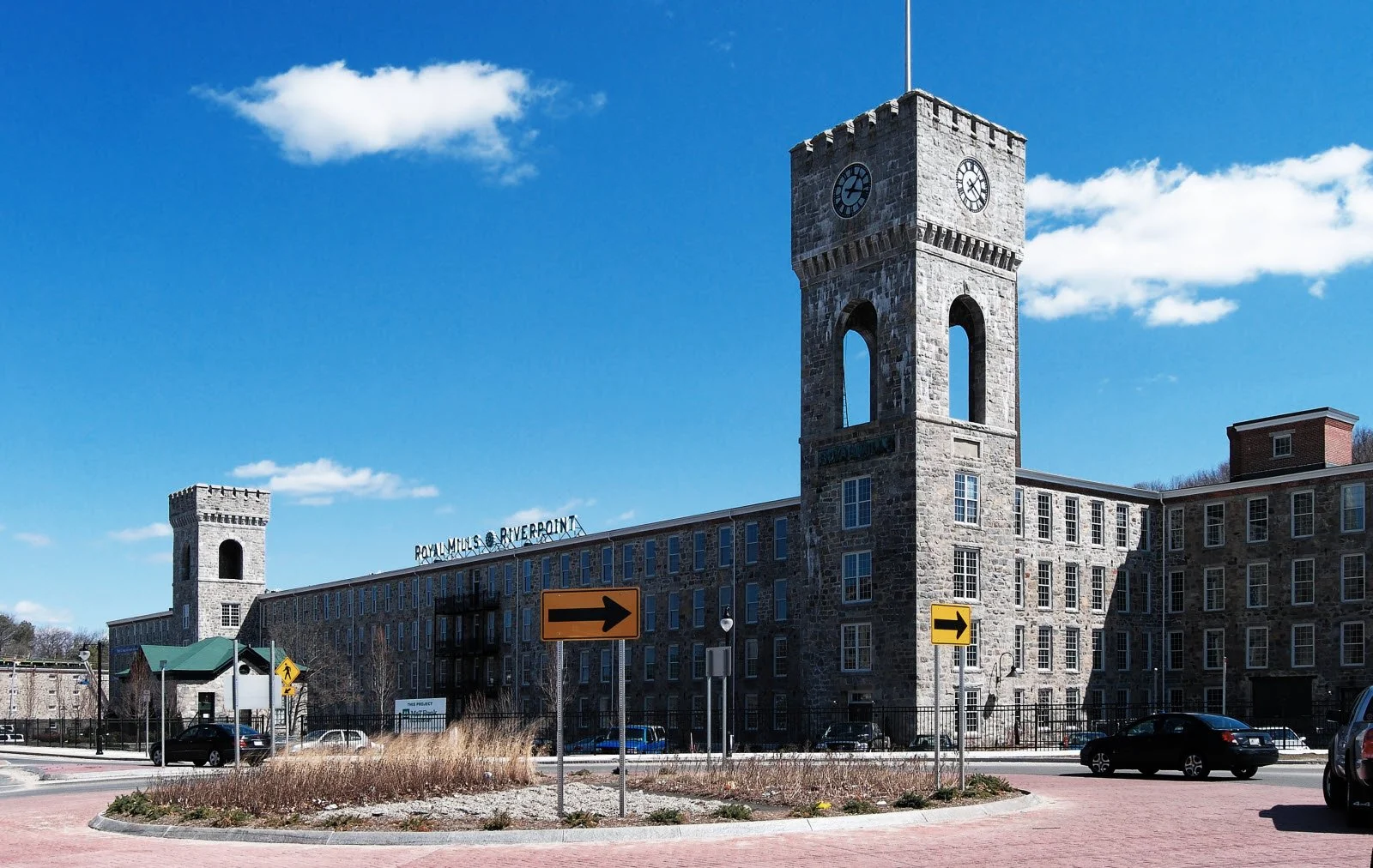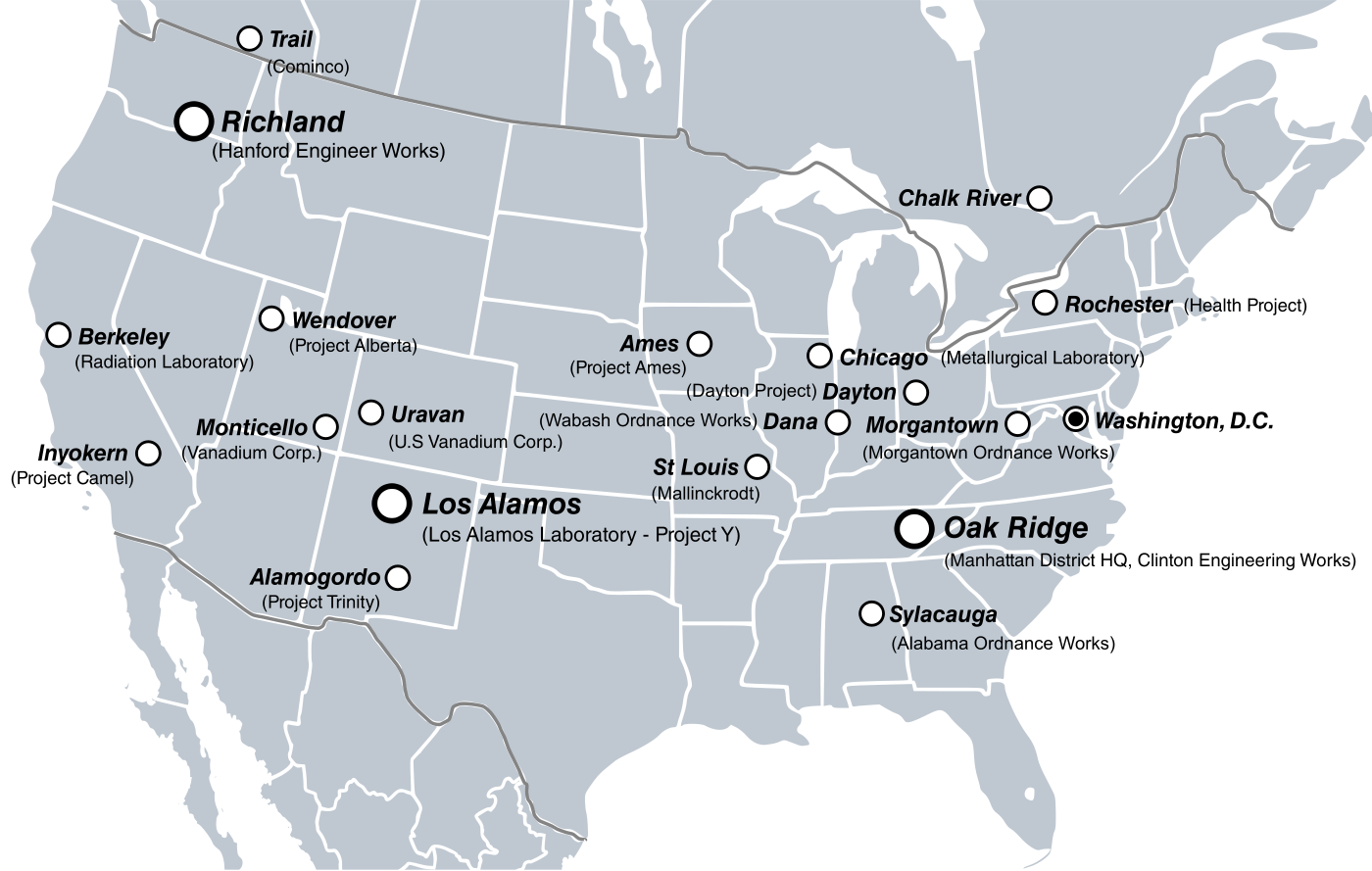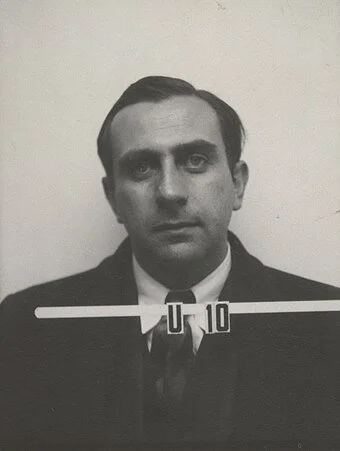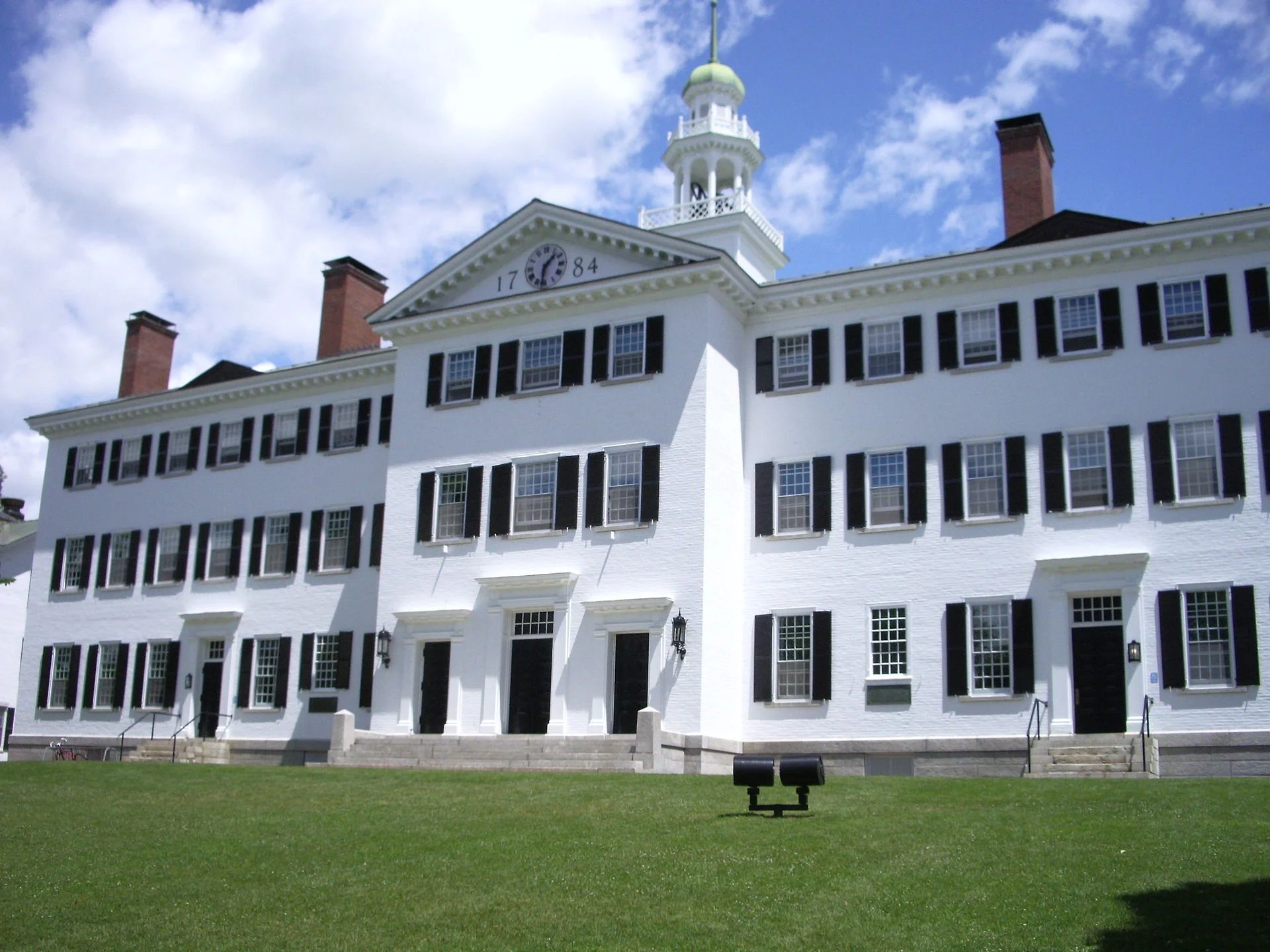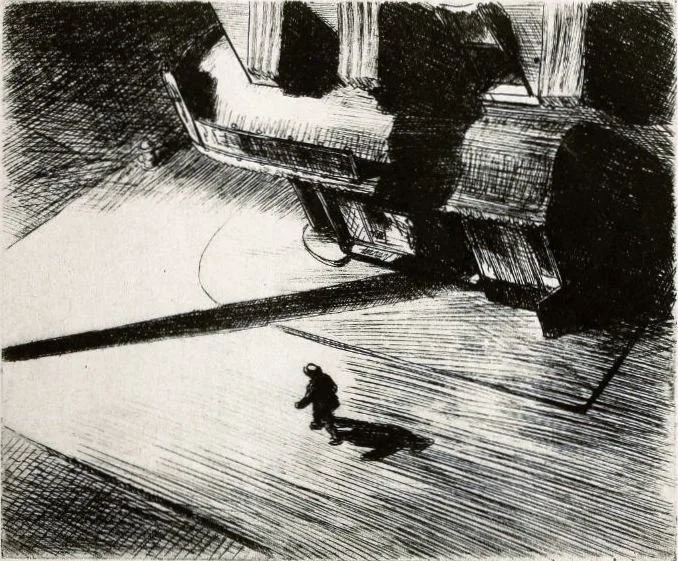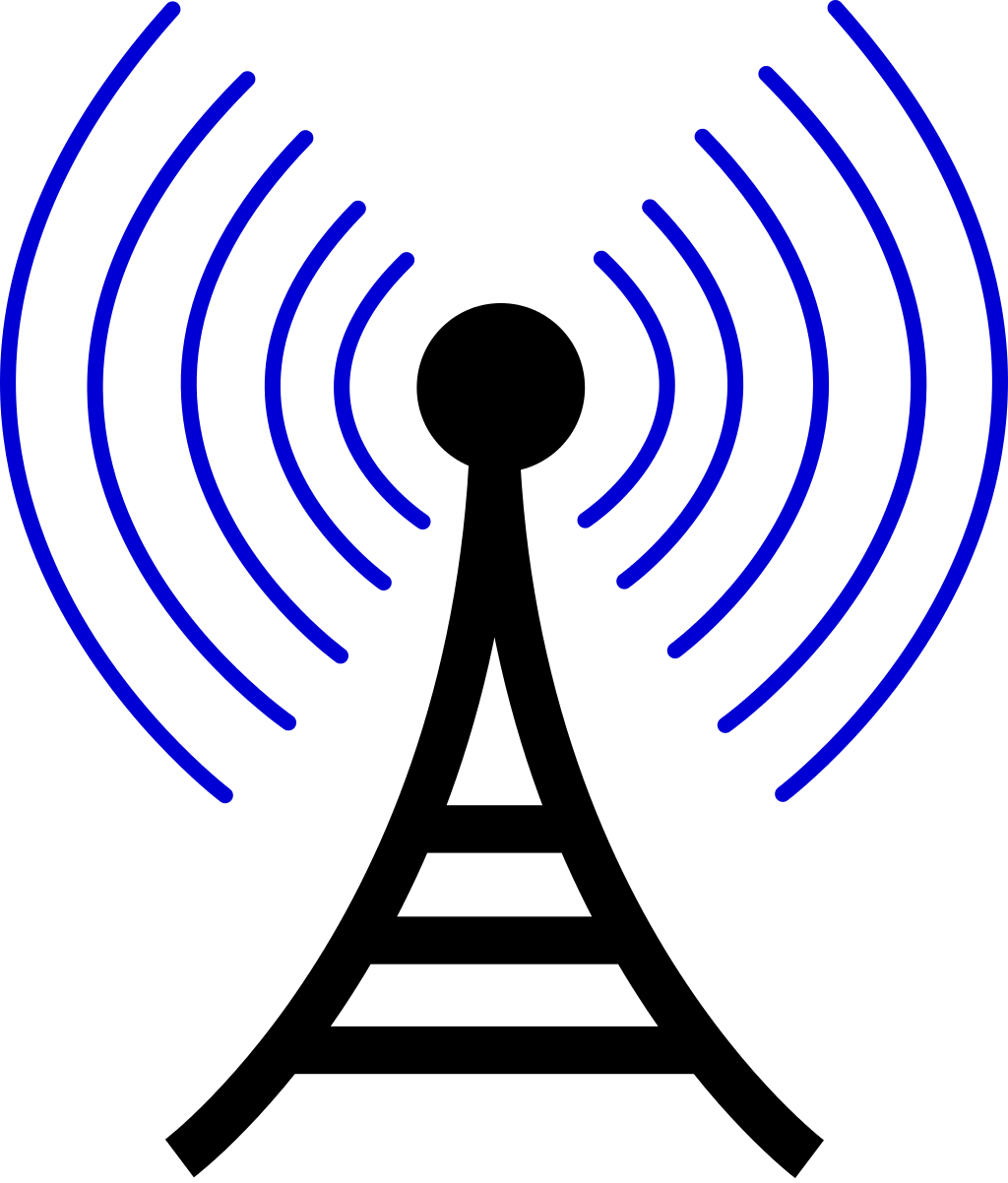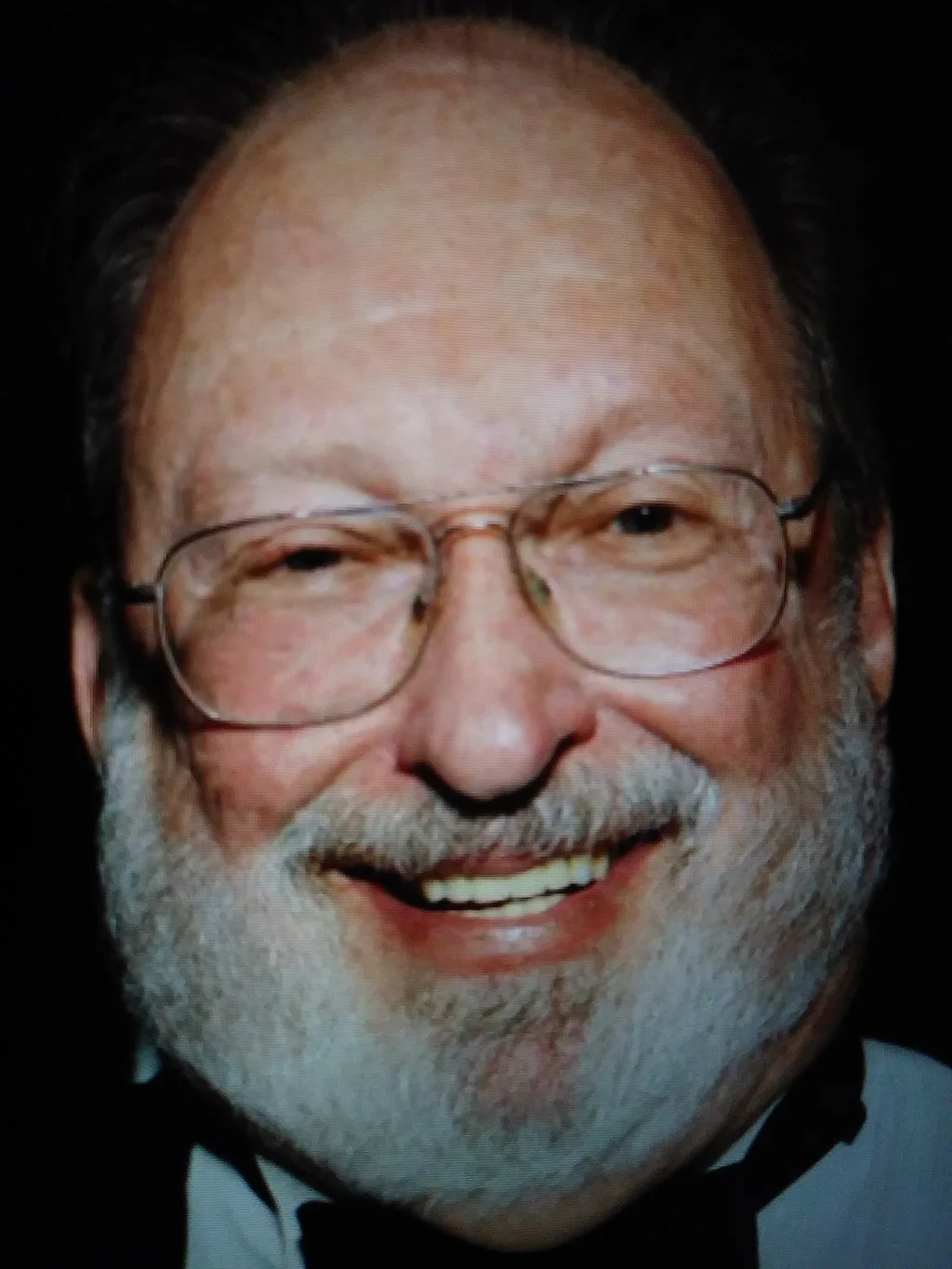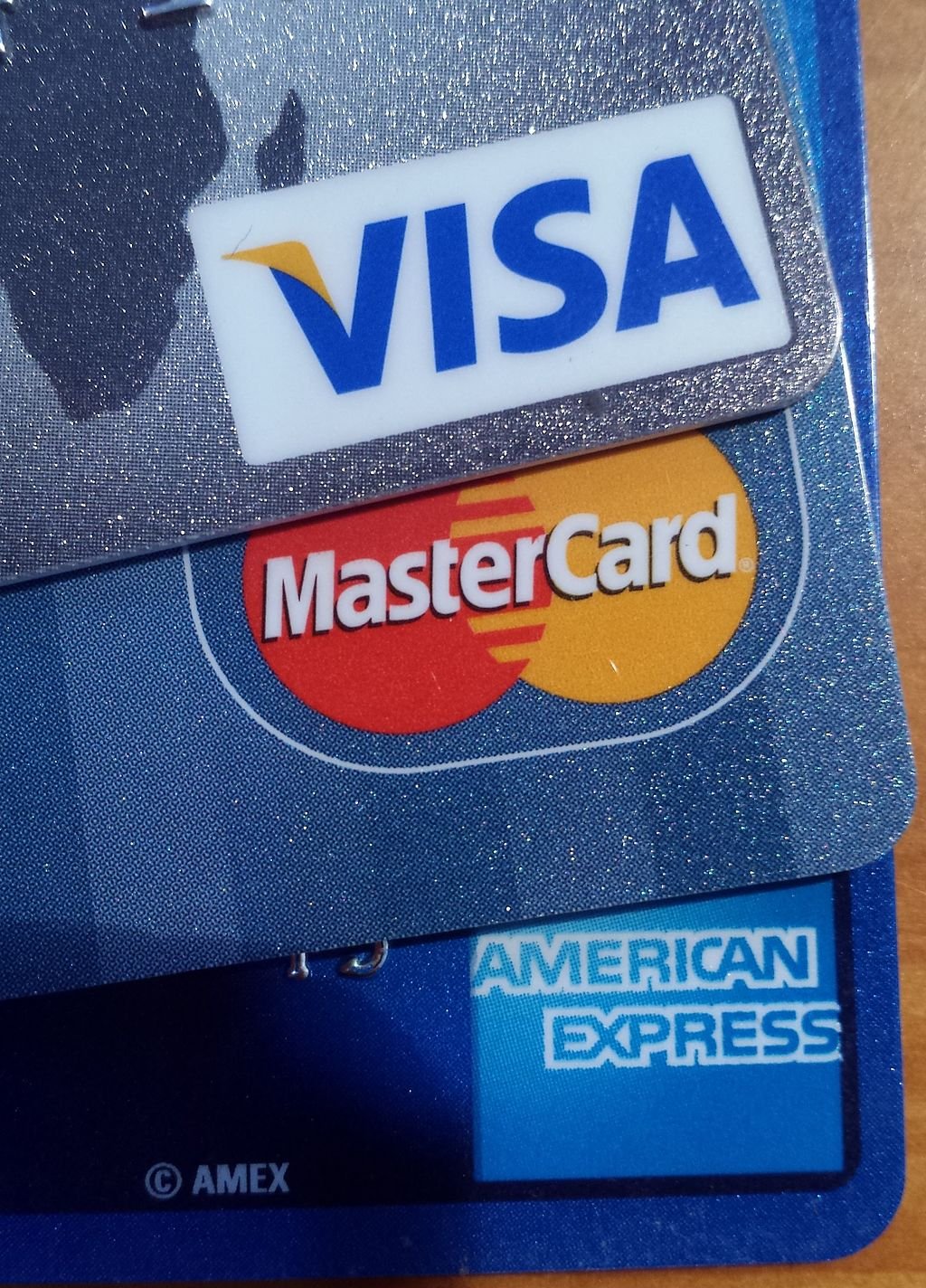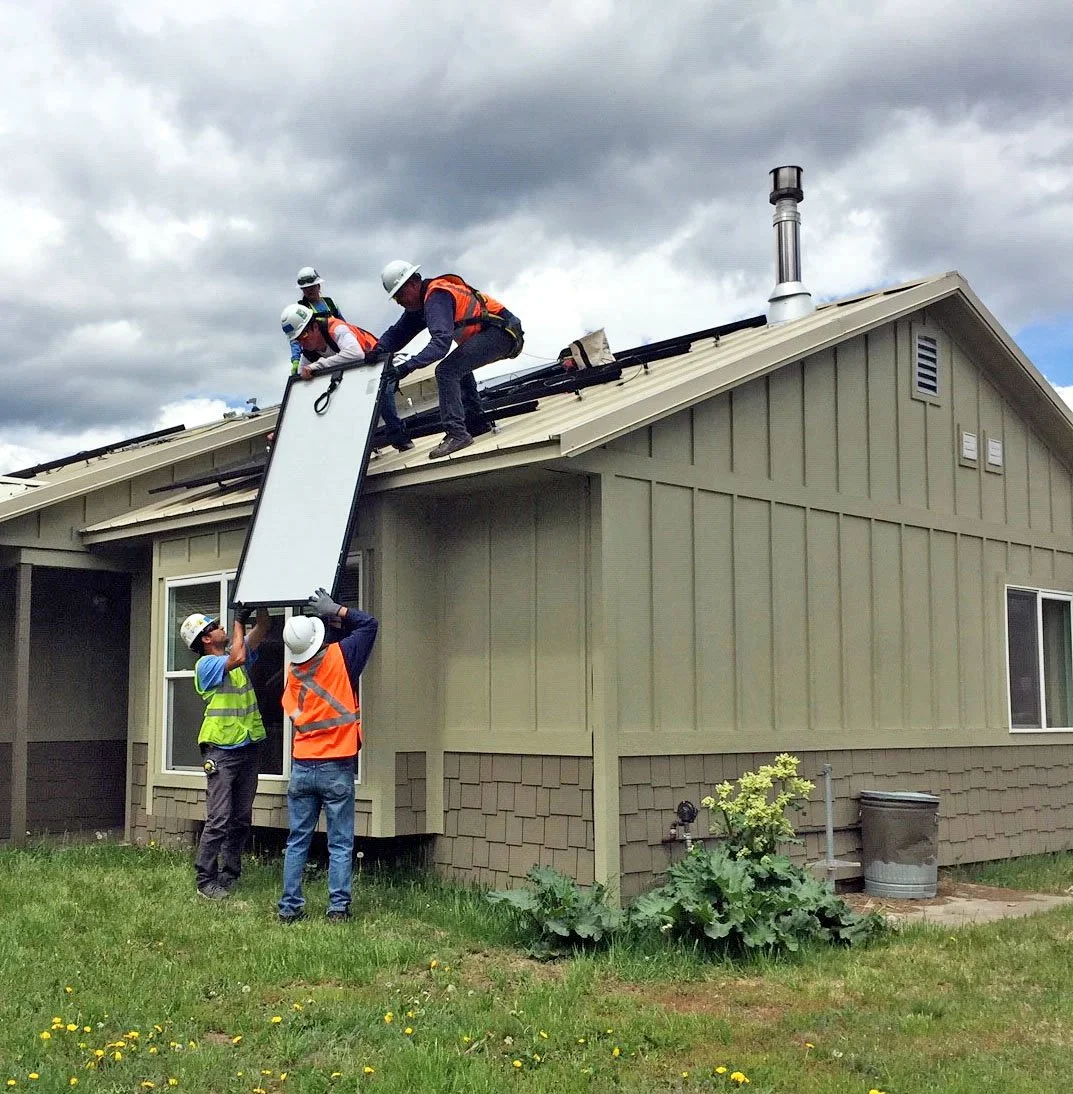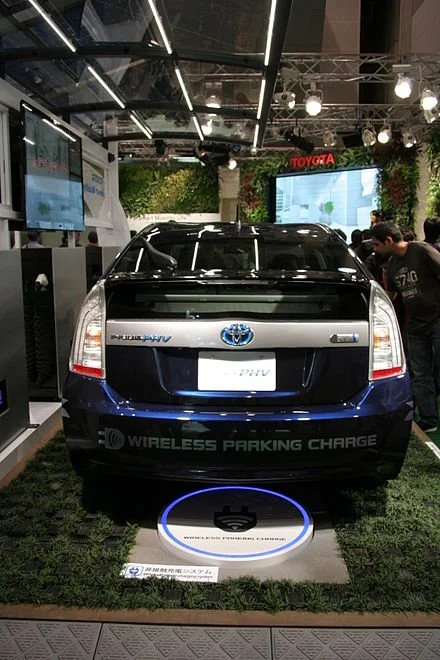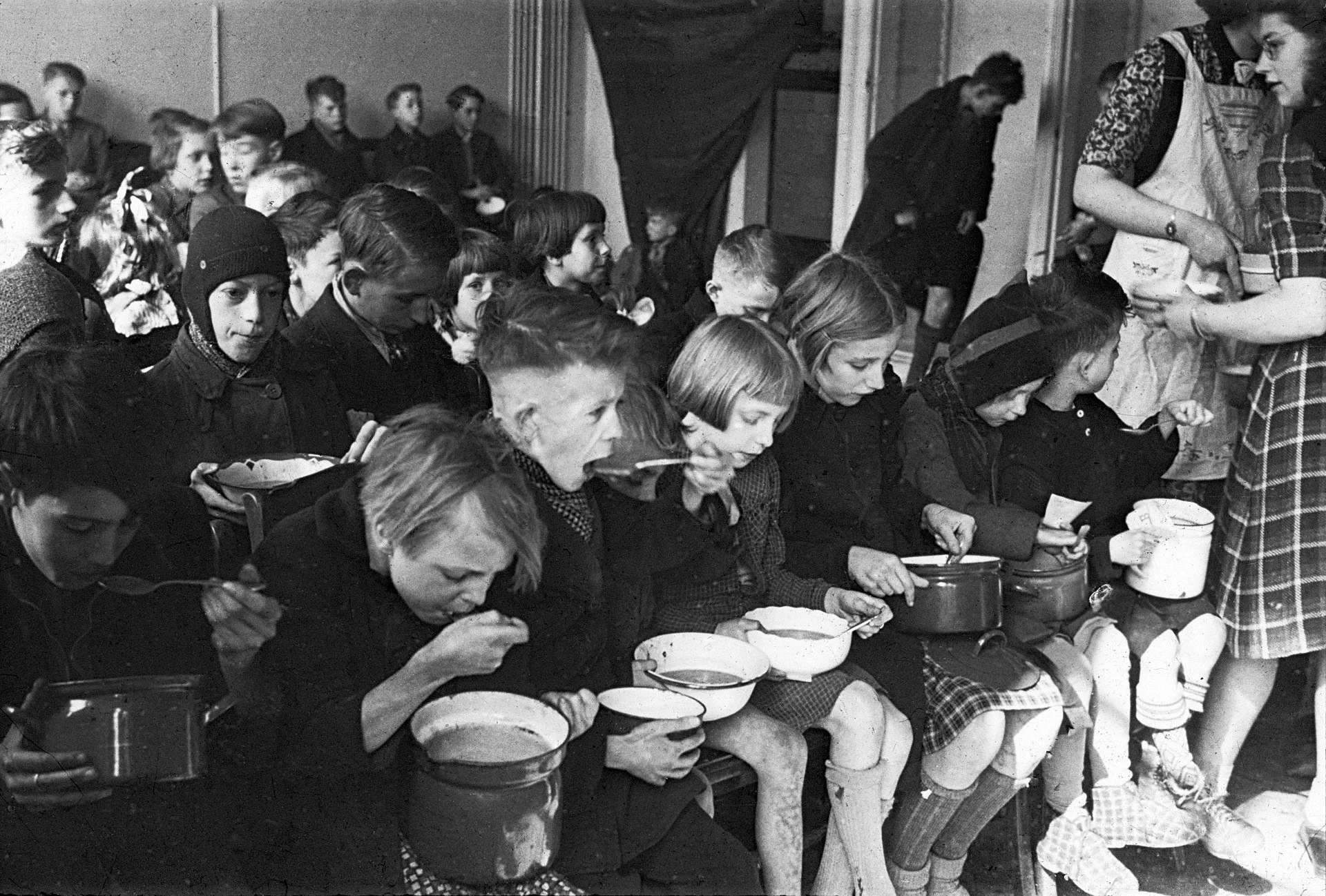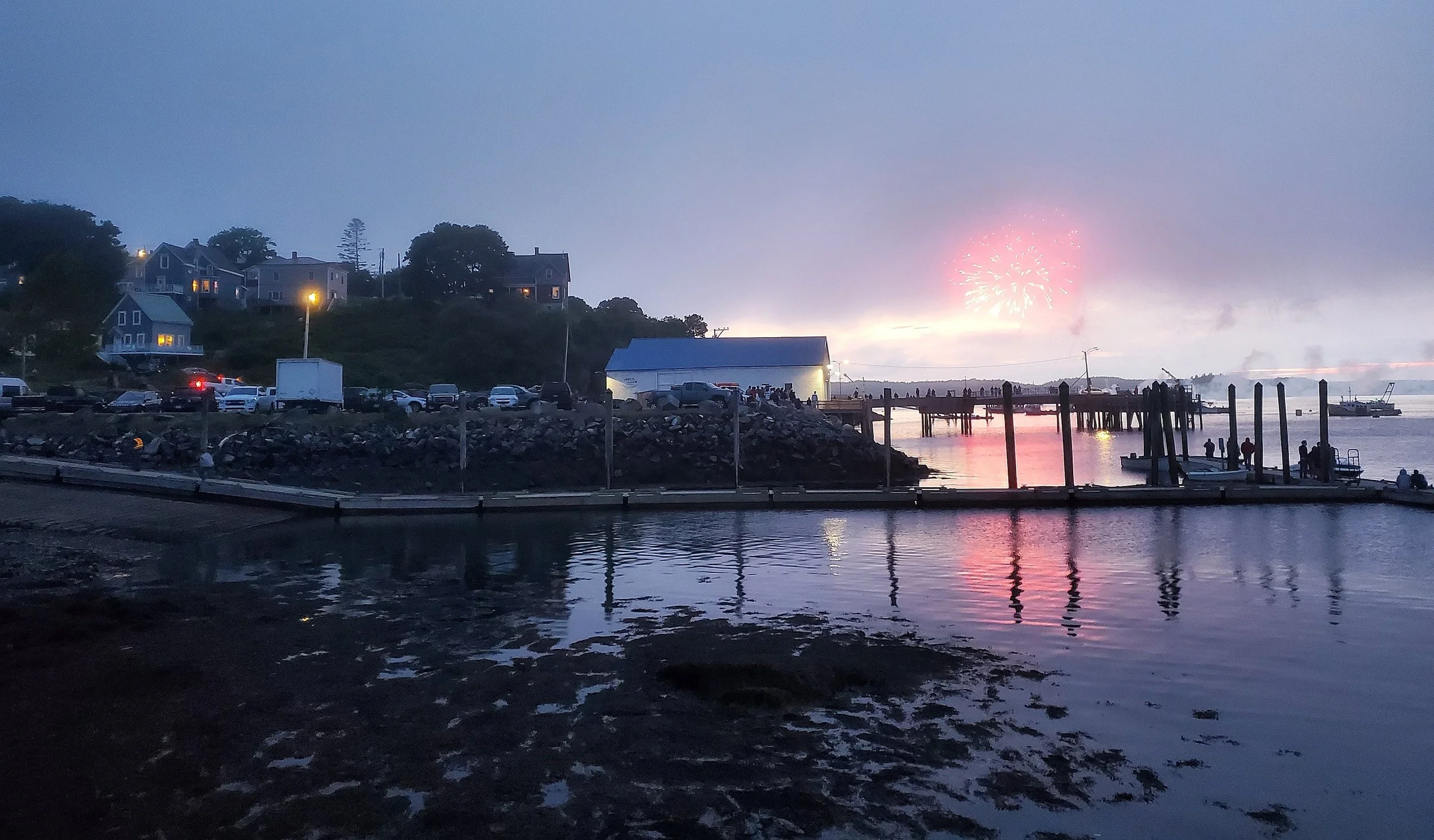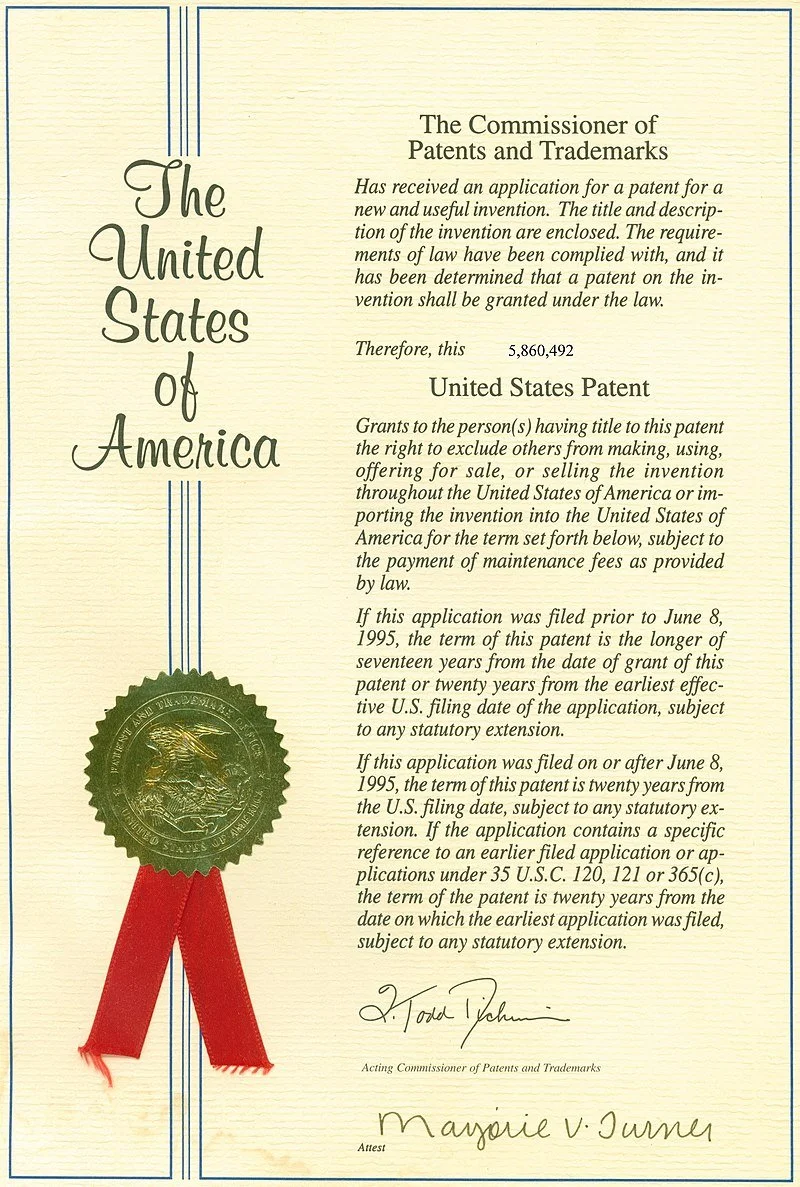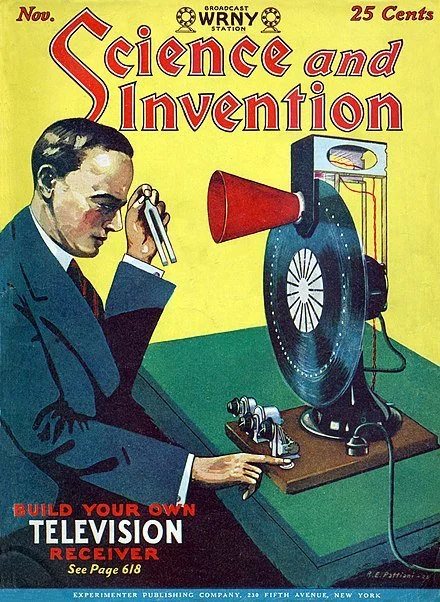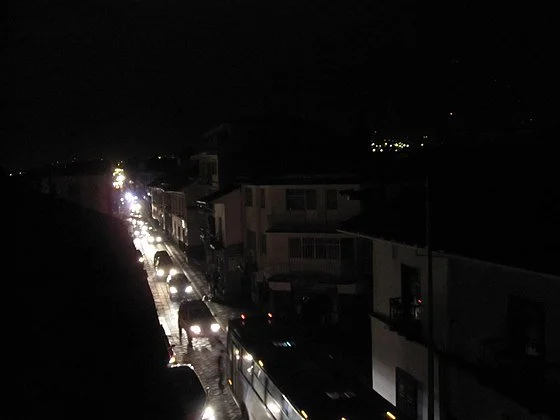
Llewellyn King: Capitalist solutions to the housing crisis
The Royal Mills complex, in West Warwick, R.I., a former textile factory that was converted to 250 residential apartments.
WEST WARWICK, R.I.
The housing crisis, which is spread across the United States, is most easily measured in the human cost. At the low end that is families, working families, forced to go without a roof, to live in cars, on the streets, and in tent cities or municipal shelters.
But there are other costs, mostly to young people; costs like getting married and having to live with parents or living in a group house long past the age when that is an adventure.
A big cost of the housing crisis is labor mobility.
One of the great strengths of the American workforce has been its preparedness to relocate to the work, unlike parts of Europe where the workers have demanded that the work come to them.
It was this mobility that fed the growth of California and today is feeding the growth of Texas, although housing stress — particularly in Austin, the dynamic capital — is beginning to be a problem there.
Mobility is a feature that made America America: its restlessness, its sense of seeking the frontier and moving there.
According to Dowell Myers, a professor of policy, planning and demography at the University of Southern California, whom I recently interviewed on the television program White House Chronicle, 21 percent of the population relocated every year, now it is down to 8 percent.
According to Myers and other experts, the housing shortage has been building since the Great Recession of 2008 to 2009. This has been multifaceted and includes a shortage of money available for lending to builders, labor shortages, supply chain disruptions, but particularly local exclusionary laws.
To my mind, and to architects and developers I have spoken to, those laws are the biggest problem: the mostly smug, leafy suburbs don’t want new townhouses or apartments. That introduces underlying issues of class and race. In the suburbs, two of the most dreaded words are “affordable housing.”
The answer is to build “luxury” housing rather than designated low-income housing, according to Myers. It is a view I have espoused for years. Build upscale housing that caters to the middle class and as people move up, more housing will become available at the bottom. It is capitalism at its simplest: supply and demand at work. At present we have too much demand and not enough supply.
An extraordinary thing about the housing crisis that is crippling the nation and changing its social as well as its labor dynamics, is why isn’t this a prominent issue in this presidential election year.
It is an issue that could bolster candidates because there are things at the federal level which can be done. Here is a problem that affects all. Where are the political solutions coming from the top? Where are the political reporters asking the candidates, “What are you going to do about housing, a here-and-now crisis?”
Public housing comes pre-stigmatized. The answer is the market. It isn’t a free market because it is inhibited by the fortress-suburb mentality, but there is enough room for the market to accelerate, to build more houses with just a little federal incentive.
Some of the most attractive homes in New England are in converted mills and factories. These grand structures have been turned into what realtors call “residences.”
The use of the word residences, instead of apartments, denotes something desirable. So be it: If it works, do it.
Much of the rehabilitation of the industrial properties in New England, and across the country, has gone in tandem with tax incentives. In one case, these were enough for the developers to produce 250 apartments from one historic mill in Rhode Island. (See photo.) Up and down the country there are abandoned industrial properties that require little zoning hassle to be repurposed.
USC’s Myers, who says every kind of housing is needed, points out that building for those who can afford to buy works in another way: It inhibits gentrification and the social upheaval, as the poor are pushed out of their old neighborhoods, something which, by the way, has been very apparent in Washington, D.C.
The use of urban space is changing, shopping centers are failing and office buildings are losing their luster, and that means housing opportunities. Repurposing isn’t the only answer, and a lot of new housing is needed, but there is huge evidence that repurposing works from the factories of New England to the lofts of Manhattan — desirable housing has been created from the debris of the past.
Building anything anywhere isn’t a simple matter, but once the financial incentives are gotten right, things begin to move. It will take decades to fix the housing problem, but that should be accelerated now.
Llewellyn King is executive producer and host of White House Chronicle, on PBS. His email is llewellynking1@gmail.com, and he’s based in Rhode Island.
Llewellyn King: Memories of people I knew from the Manhattan Project; beautiful "Barbie'
Important sites in the Manhattan Project. Alamogordo is where the first atomic bomb was detonated, on July 16, 1945. The map would have been better if it had included the site of uranium 238 refining for the project by Metal Hydrides Inc., in Beverly, Mass.
Edward Teller’s (1908-2003) badge photo at the Manhattan Project’s Los Alamos, N.H., facility. Called “The Father of the Hydrogen Bomb,’’ he was seen as an inspiration for the eponymous scientist in Stanley Kubrick’s classic 1964 black comedy Dr. Strangelove.
WEST WARWICK, R.I.
I have been to the movies. I haven’t done that since before the COVID shutdown.
I went to see two huge movies that have each grossed $1 billion so far, and I enjoyed them enormously. They are, of course, Barbie and Oppenheimer.
I went to see Barbie because I thought I should know what people were discussing. I went to see Oppenheimer because, in a sense, I have skin in that game. I knew a few people who worked on the Manhattan Project, and two of them were characterized in the movie: Hans Bethe and Edward Teller, known as the father of the hydrogen bomb.
About Barbie: It is a fantasy romp filled with popular, real-life messages. I had to see how director Greta Gerwig would make an adult movie about a doll, albeit a storied one — with brilliant imagination is how.
Oppenheimer, by contrast, is a major cinematic work, a remarkable recapturing of history and character development on the screen. Christopher Nolan is a director at the top of his game. He deserves a comparison with Orson Welles and David Lean.
Across the board, it is a triumph, compelling and true to the facts and the personalities. The evocative recreation of Los Alamos as it must have been, of the tower from which the first nuclear device was detonated, rings true. I have crawled all over the nuclear-test site and spent many hours at Los Alamos, where I used to give an annual lecture on energy or the relationship of humans to science.
In November 1975, Bethe and another veteran of the Manhattan Project, Ralph Lapp, and I put together a panel of 24 Nobel laureates (including Bethe) to defend civilian nuclear power. We got them all together on a stage at the National Press Club, in Washington. I had hoped that it would be a seminal event, ending some of the nonsense being spread about nuclear radiation.
Ralph Nader took up arms against us and assembled 36 Nobel laureates who were cool to nuclear. Ours were physicists, engineers and mathematicians who had a vast understanding of nuclear and endorsed it enthusiastically.
We didn’t win. Bethe, as I recall, was philosophical about being trounced.
I first met Teller in Geneva. I was to introduce him at a conference, and we had breakfast together. He seemed distracted and confused. But he was in top form when he spoke.
Later, I got to know him better. He gave a series of speeches for conferences I had organized on the Strategic Defense Initiative — colloquially known as Star Wars. He often sat slumped in his chair, clutching his enormous walking stick. But he stood erect on the podium, arguing vigorously the case for Ronald Reagan’s program.
The Oppenheimer movie reminded me of two institutions I covered intensely as a reporter: the Atomic Energy Commission (AEC) and its congressional overseer, the Joint Committee on Atomic Energy.
The committee was supposed to check the AEC. The AEC was a tool of the powerful and wildly pro-nuclear committee — the only joint committee empowered to introduce legislation in both houses of Congress. The reality of that partnership was that the committee proposed and the AEC disposed.
The movie is extraordinary in capturing the workings of Congress and how a nod or a smile can put great events in motion.
This understanding of the nuances and mores of Washington, and particularly the arcane theatricality of the congressional hearings, is accurate in ways seldom captured on film. This is more surprising given that the director is an Englishman who lives a very private life in Los Angeles.
I leave it to sociologists to ponder how two movies as different as Barbie and Oppenheimer could open simultaneously, becoming huge hits. If you see these movies, especially Oppenheimer, see them in the theater. They deserve that big-screen and wraparound-sound environment.
On Twitter: @llewellynking2
Llewellyn King is executive producer and host of White House Chronicle, on PBS.
White House Chronicle
Llewellyn King: Fall down before a Frankenstein deity
How deep learning is a subset of machine learning and how machine learning is a subset of artificial intelligence
— From British Wikipedia
WEST WARWICK, R.I.
Those who work with language have reason to worry about the effect of artificial intelligence and its awesome skill with words.
You can, for example, ask ChatGPT to write an article on almost any subject, and it will mostly come back with something ready for the page, untouched by a human editor. If you want it in Washington Post style and it is in Guardian style with British spelling, faster than you can type in the request, it will reformat the article into the style and usage you want and, presto, it is ready to print or publish digitally.
Writers, lawyers and college professors will feel the sting first. Writers in Hollywood are on strike because of the threat posed. College professors are going into the new term unsure whether they will deal with original work or whether students are substituting AI-generated essays and theses.
Journalists, already reeling from the closure of so many newspapers, are wondering about their future.
But what about religion?
AI ramifications in organized religion are good and bad. In fringe religions and cults, it will be open season on worshipers. And some will find comfort in speaking to God as though the Almighty is resident in AI.
On the good side, many pastors approach Sunday in trepidation. The sermon, which is supposed to be instructional, uplifting and erudite, is a source of torture to those who aren’t good writers or have difficulty sharing their own faith with the congregation.
There are newsletters to help sermon writers and a wealth of diocesan support. Still, sermons are a trial for many pastors. You can read an old sermon or plagiarize another cleric, but that leaves sincere preachers feeling they are cheating and letting their congregants and their mission down.
Enter AI. By feeding a few thoughts to a chatbot, a polished sermon incorporating some of the preacher’s ideas appears almost instantly.
This hasn’t been wasted on the established churches, I learn from the BBC. The churches are looking at ways of embracing AI, using it as a tool, a gift to help with preaching and pastoral work, comforting the sick, composing notes of sympathy, and research.
The rub comes when people, as some surely will, confuse concepts of God with AI simulations and start to think that AI is a deity.
It has the characteristics usually associated with a deity: ubiquitous and seemingly all-knowing.
Indeed, it may claim to be a god if it hallucinates, as it sometimes does. What, then, for the unsuspecting? Do they fall to their knees?
I asked ChatGPT, and it sent me a 10-point list of the possibilities, noting that it is a subject that is complex and evolving.
These three points are scary:
—“Customized Spiritual Experiences: AI algorithms could be designed to tailor spiritual experiences to individual preferences and beliefs. These experiences might include personalized prayers, meditation sessions, or virtual pilgrimages, designed to resonate with each person’s spiritual inclinations.”
—“Ethical Dilemmas and Moral Guidance: AI might be used to explore complex ethical questions and provide guidance based on religious teachings. For instance, AI systems could analyze various religious perspectives on a given moral issue and help individuals navigate their choices.”
—“Exploration of Spirituality and Philosophy: AI’s ability to process vast amounts of information could be harnessed to delve deeper into philosophical and spiritual questions, potentially offering new perspectives on the nature of existence, consciousness and the divine.”
Would it be safe to call it Frankenstein worship?
On Twitter: @llewellynking2
Llewellyn King is executive producer and host of White House Chronicle, on PBS.
Dartmouth Hall at the eponymous college in Hanover, N.H.
Editor’s note. This is from the Council of Europe:
“The term ‘AI’ could be attributed to John McCarthy of MIT (Massachusetts Institute of Technology), which Marvin Minsky (Carnegie-Mellon University) defines as ‘the construction of computer programs that engage in tasks that are currently more satisfactorily performed by human beings because they require high-level mental processes such as: perceptual learning, memory organization and critical reasoning. ‘ The summer 1956 conference at Dartmouth College (funded by the Rockefeller Institute) is considered the founder of the discipline. Anecdotally, it is worth noting the great success of what was not a conference but rather a workshop. Only six people, including McCarthy and Minsky, had remained consistently present throughout this work (which relied essentially on developments based on formal logic).’’
Llewellyn King: We're lonely in our boxes
“Night Shadows’’ (1922 etching), by Edward Hopper, created for the magazine Shadowland.
WEST WARWICK, R.I.
The nation, I read, is in the grip of a loneliness epidemic.
This has all been made worse, one suspects, by the effects of the pandemic-induced lifestyle changes — consequences of the forced isolation that changed social and work practices in ways that haven’t changed back.
Other changes have been coming slowly over the decades, but all add to the lonely life. The way of life has had a trajectory for those who live alone, which has increased the possibility of loneliness.
We isolate ourselves in ways that are new or only decades old. We drive alone. We live in a house or apartment, if single, alone. We work alone in that dwelling, facing a computer or watching a movie on television alone.
I call this the box culture: We drive in a box, live in a box, and, as likely as not, stare into a box as we work.
Changing work patterns are probably a critical part of the structural loneliness that is now rampant. Even if one doesn’t work at home, we work differently. We used to make contacts, and often new friends, by doing business on the telephone. Now we shoot off an email and maybe, if it can’t be avoided, make an appointment to make a video call with several people.
We have wrung out all spontaneity. Making friends is a kind of spontaneous combustion. You might as well be doing business with AI for all the lack of warmth or humor in today’s work interactions.
Then there are work friends. For most of us, it was at work or through work that we made our friends — that is, if they weren’t carryovers from school or college.
People who work together and play together fall in love, sometimes get married, and sometimes meet a friend who undoes a marriage. There is a lot of sex at places of work, although companies might deny it. Note the number of CEOs who marry their assistants.
Another feature of the loneliness structure is that pub life is in decline. The local tavern, even for non-drinkers, was part of the way we lived, and drinking isn’t as pervasive as it once was.
Time was when after work or wishing to see a friend, you went for drinks. People gave drinks parties at noon on weekends: no food, just a convivial glass. That isn’t extinct, but it isn’t what it used to be.
Drinking oils society’s wheels but of course too much, and the wheels come off. Go sit at the bar, and someone will talk to you. There is camaraderie in a saloon.
Entertaining has become more formal. Blame all those cooking shows on television. People don’t have friends over for a hamburger anymore. No. They have to have Steak Diane and a soufflé — a meal with the stamp of Julia Child on it. Result: less dropping in on friends, more isolation.
Of course, there are those who are lonely because of bereavement, sickness, old age and family abandonment. But those things have always been with us. They really suffer loneliness, feel the terrible blanket of isolation.
For those who have decided it is too strenuous to go to the office, that the phone is for messaging, that home loneliness is inevitable because we can’t cook or are ashamed of our homes, join something: a church, a theater group, a book club or do volunteer work.
Much of loneliness, from what I can divine, is a product of how we live now. We sit in our boxes inadvertently avoiding others. Television isn’t friendship, drinking alone isn’t companionship. Go shopping in a store, go to church, go to the pub, work in the food bank, join a book club. As the old AT&T advertisement used to say, “Reach out and touch someone.”
No one can predict how or where great friends or great loves will be found, but certainly not staring at a computer.
Several of my greatest friendships are a result of people who have taken violent exception to something I have written and wanted to meet up to berate me. The facts were wrong. I was evil, I met them to take my medicine, as it were, and parted knowing a new friend.
Surgeon Gen. Vivek Murthy has raised the issue of loneliness. He would be advised to tell people to look at lifestyle. Does it have loneliness baked in?
On Twitter: @llewellynking2
Llewellyn King is executive producer and host of White House Chronicle, on PBS. He’s based in Rhode Island and Washington, D.C.
White House Chronicle
Llewellyn King: Despair and danger
WEST WARWICK, R.I.
Body language is the new political voice in America.
The language is universal and easily learned because it has just four components: eye-rolling, sighing and shrugging, accompanied by turning hands up.
“Oh my God, it’s a disaster,” is one translation. Another might be, “Don’t ask me, I didn’t sign on for this.”
It belongs — this silent expression of despair about the presidential election, unfolding for 2024 — to old-line Republicans and to a wide swath of Democrats, too.
Political discussion has ended in these groups, replaced by the kind of fatalism summed up in the words of the Irish poet William Butler Yeats that we are slouching toward Bethlehem.
Of course, as Washington Post columnist George Will says, the inevitable isn’t necessarily inevitable. However, at the moment, it looks as if it is.
The despair is spread pretty evenly among Democrat, many of whom consider President Biden too old, and Vice President Kamala Harris not up to the job she has, let alone the presidency.
At 80, Biden is showing reduced vigor and limited mobility, and he favors scripted speeches. This from a politician who was famous for nonstop talking.
Over the years, like other reporters, I have often thought, “Joe, you have made your point, now stop.” These days, you wait in vain for him to go off script. His speeches, which he reads from a Teleprompter, sound as though they were prepared by a committee — lifeless repetition.
He never holds a press conference, a sign of dwindling confidence.
The bigger fear in the Democrats isn’t that Biden is too old but that Harris, at some point, may become president. She has proven herself to be woefully inept and incoherent.
In every assignment Biden has handed her on which she could have shown her worth, she has failed or simply not done. Remember, she was Biden’s point person on the border crisis? She hasn’t been heard from as such.
This past spring, she went to Ghana, Tanzania and Zambia to counter the Chinese and chose to make it an occasion to apologize for slavery. I was born and raised in Africa, in what is now called Zimbabwe, and have traveled extensively on the continent, and slavery isn’t a burning issue. The high point of this visit was Zambia, where Harris’s paternal grandfather came from and where she was welcomed.
China has three great appeals to African countries: It asks no questions, doesn’t lecture on human rights, and pays off the ruling elites, trading these indulgences for minerals.
While Biden and Harris may seem a dangerous pair, Donald Trump, twice indicted (so far), twice impeached, now reduced to feeling sorry for himself on a colossal scale, is terrifying. He has promised an administration of vengeance.
Whereas I can’t find any Democrats who are enthusiastic about the Biden-Harris ticket, I certainly can find far-right Republicans who love Trump. Mostly, they are the working-class White voters, who were once the mainstay of the Democratic Party and now believe that the America they know and want to preserve can only be saved by the reprehensible Trump, with his relentless abuse of all who cross him and endless lachrymose pity for himself.
Trump’s defense of himself is risible, but the faithful Trumpsters believe in him — as much as ever.
They aren’t statistics to me. Recently, my wife and I were eating at a Chinese restaurant in Rhode Island when a couple with a small child took the booth behind us. You might call them the salt of the earth: working people doing their best to raise a family. The husband was complaining loudly about the high cost of living. Then, after seeing Trump on an overhead TV, he said to his wife, “The only honest man is Trump.”
That young father wasn’t alone.
At a neighborhood pub that, in the British sense, is our “local,” the owner and patrons know that both my wife and I are journalists, and because Rhode Island PBS airs our program, White House Chronicle, we are treated with deference. But that doesn’t prevent good, hard-working, fellow patrons, mostly of Italian, Irish and Portuguese stock, from lambasting the media within earshot of us. “It’s all lies.” “They hate Trump because he tells the truth.” They say things like that because they believe them. They are the Trump base.
When I hear that stuff, how do I react? Well, I roll my eyes, sigh, shrug my shoulders, and, if no one is looking, I turn my hands up to the heavens.
On Twitter: @llewellynking2
Llewellyn King is executive producer and host of White House Chronicle, on PBS.
Llewellyn King: Smoke spreads amidst global warming but beware overzealous regulation
Smoke from Canadian forest fires in the Delaware River Valley. See New England’s “Dark Day’’.
WEST WARWICK, R.I.
The smoke from wildfires in Canada that has been blown down to the United States, choking New York City and Philadelphia with their worst air quality in history and blanketing much of the East Coast and the Midwest, may be a harbinger for a long, hot, difficult summer across America.
It could easily be the summer when the environmental crisis, so easily dismissed as a preoccupation of “woke’’ Greens and the Biden administration, moves to center stage. It could be when America, in a sense, takes fright. When we realize that global warming is not a will-or-won’t-it-happen issue like Y2K at the turn of the century.
Instead, it is here and now, and it will almost immediately start dictating living and working patterns.
In an extraordinary move, Arizona has limited the growth in some subdivisions in Phoenix. The problem: not enough water. Not just now but going forward.
The floods and the refreshing of surface impoundments, such as Lake Mead and Lake Powell, the nation’s largest reservoirs, haven’t solved the crisis.
All along the flow of the Colorado River, aquifers remain seriously depleted. One good, rainy season, one good snowpack may recharge a dam, but it doesn’t replenish the aquifers that hydrologists say have been undergoing systematic depletion for years.
An aquifer isn’t just an underground river that runs normally after rainfall. It takes years to recharge these great groundwater systems. These have been paying the price of overuse for years; across Texas and all the way to the Imperial Valley, in California, unseen damage has been done.
It isn’t just water that looms as a crisis for much of the nation, there is also the sheer unpredictably of the weather.
I talk regularly with electric- and gas-utility company executives. When I ask them what keeps them awake at night, they used to respond, “Cybersecurity.” Recently, they have said, “The weather.”
This year, we are entering the tropical-storm season with unusually warm ocean temperatures in the Atlantic and the Pacific. The doleful conclusion is that these will signal severe and very damaging weather activity across the country.
The utilities have been hardening their systems, but electricity is uniquely affected by weather. The dangers for the electricity industry are multiple and all affect their customers. Too much heat and the air-conditioning load gets too high. Too much wind and power lines come down. Too much rain and substations flood, poles snap and there is crisis, from a neighborhood to a region.
In the electricity world, the words of John Donne, the 16th-Century English metaphysical poet, apply, “No man is an island entire of itself.”
There is another threat that the electricity-supply system will face this summer if the weather is chaotic: overzealous politics and regulation.
It is the electric utilities that are most identified in the public mind with climate change. The public discounts the myriad industrial processes as well as the cars, trucks, bulldozers, trains and ships that lead to the discharge of greenhouse gases into the atmosphere. Instead, it is utilities that have a target pinned to them.
A bad summer will lead to bad regulatory and bad political decisions regarding utilities.
Foremost are likely to be new attacks on natural gas and its supply chain, from the well, through the pipes, into the compressed storage, and ultimately to combustion turbines.
At this time, natural gas – about 60-percent cleaner than coal — is vital to keeping the lights on and the nation running when the wind isn’t blowing, or the sun has set or is obscured.
The energy crisis that broke out in the fall of 1973, and lasted pretty well to the mid-1980s, was characterized by silly over-reactions. First among these was probably the Fuel Use Act of 1978, which got rid of pitot lights on gas stoves and even threatened the eternal flame at Arlington Cemetery.
It also accelerated the flight to coal because, extraordinarily, that was the time of the greatest opposition to nuclear power — from the environmental communities.
This summer may be a wakeup for climate change and how we husband our resources. But wild overreaction won’t quiet the weather.
Llewellyn King is executive producer and host of White House Chronicle, on PBS, and a long-time editor, writer and consultant in the international energy sector. His email is llewellynking1@gmail.com, and he’s based in Rhode Island and Washington, D.C.
#global warming #Llewellyn King #electric utilities
Llewellyn King: Pray tell, Oracle, how we get out of this
“Consulting the Oracle,’’ by John William Waterhouse (1849-1917)
WEST WARWICK, R.I.
When the ancient Greeks wanted to learn what their future held, they would consult with oracles. Alexander the Great, for one, visited the Oracle at Siwa, an oasis in the Egyptian desert. According to his biographer, Plutarch, the oracle told Alexander that he was destined to conquer the world.
In these tumultuous days when we, the electorate are offered a choice between an old, old president and his daffy vice president and a slightly less old vengeful reprobate with a persecution complex, I did the smart thing: I consulted the oracle.
No, I didn’t cross the desert on a camel, nor as Alexander did on his much-loved horse, Bucephalus, nor in a snazzy BMW SUV.
I did go to the oracle of the day, which is the only place I know to seek and get what seems to be extraterrestrial advice: the Bing AI. I asked the oracle several questions and got some interesting answers.
When it came to the big question, I beseeched the Bing AI, “Great Oracle, I am an American voter, and I am in an awful tizzy. I don’t know whom to support in the next presidential election.
“It seems to me that one candidate, President Joe Biden, a decent man, may be too old to navigate the difficult waters ahead in domestic and international affairs.
“As for another candidate, former President Donald Trump, many people find aspects of his conduct reprehensible.
“What to do? For me, this is even harder because I am a columnist and television commentator, and I need to have something to say. I am sure you understand, Great Oracle.”
Well, the Bing AI, clammed up: It delivered only the formal histories of both men.
I had thought my question would spark a revelation, a wise analysis, or a contradiction of my view of the candidates. Clearly, I shall have to wait for the day when I get into real AI chat: ChatGPT.
Mostly, I had thought that the oracle would tell me that all the presidential hopefuls so far will be toast by November 2024; that new candidates will bring us hope, fire up party enthusiasm and let rip.
Are new faces and new choices too much to hope for?
Republicans are wrestling with their prospective candidate after his latest character stain: He has been found liable for defamation and sexual abuse in a civil trial. What does this mean for the whole issue of what we look for in the character of candidates? Rectitude was once considered essential. Not for Trump. Post-Trump is post-rectitude.
Just under 70 percent of the electorate have told pollsters that they think Biden is too old to run for re-election. That isn’t, I submit, a conclusion arrived at by pondering what it means to be 80. That is a conclusion, again I submit, they have come to by looking at the president on TV — on the few occasions they see him there.
Clearly, he doesn’t have the strength or the confidence to hold a press conference. These are vital.
In America, the press conference is the nearest thing we have to question time in the British House of Commons. It is the time of accounting. Biden is behind in his accounting as audited by the press corps.
Harold Meyerson, editor at large of The American Prospect, is avowedly liberal. He is one of the most skillful political writers working today; deft, informed, convincing, and you know where he stands. He stands with the Democrats.
So, it is significant when he raises a question about Biden and when he draws attention, as he did on May 9, to Biden’s absence from public engagement.
Meyerson wrote, “Right now, the Democrats are drifting uneasily toward a waterfall and hoping Biden can somehow navigate the looming turbulence. By autumn, if he hasn’t had some measurable success in … allaying much of the public’s fears of a president drifting into senescence, then some prominent Democrat (a category that doesn’t include Robert Kennedy Jr. or Marianne Williamson) had damn well better enter the race.”
Llewellyn King is executive producer and host of White House Chronicle, on PBS. His email is llewellynking1@gmail.com, and he’s based in Rhode Island and Washington, D.C.
The Centerville Mill, in West Warwick
Llewellyn King: What made me an AI enthusiast.
WEST WARWICK, R.I.
I have gone over. All the way. I have fallen in love with artificial intelligence. We need it, and I’m on board.
My conversion was sudden. It happened on one memorable day, Feb. 8, 2023. It was a sudden strike in a well-worn heart by Cupid’s arrow.
My love life with technology has been either unrequited or messy. I was always the one who blew the relationship, I admit that.
It started with computer typesetting. I was a committed hot-lead-type man. I didn’t want to see that painted lady, computer technology, destroying my divine relationship with hot type. But she did and when I tried to make amends, she was, er, cold, froze me out.
Likewise, as an old-time newspaperman, I was very proficient and happy with Telex. Computer technology separated us.
The worst of all was my first encounter with the internet.
I was pursuing the story of nuclear fusion at the Lawrence Livermore National Laboratory, in California. A lab technician tried to interest me in the new device he was using to send messages: the Internet. I blew it off. “That is just Telex on steroids,” I said.
Ms. Internet doesn’t care to be scorned and she nearly cost me my manhood — well, my publishing company — when she took her terrible revenge. She killed print papers as well as hot type. She was a vengeful siren that way.
My conversion to AI began innocently enough. I was listening to a reporter on National Public Radio explaining how Microsoft’s new AI search engine would not only change the world of online searching but would also give Google a serious run for its money — billions of dollars, I might say parenthetically.
The writing's on the wall for Google unless it can get its AI to market fast. I was intrigued.
The illustration used by NPR reporter Bobby Allyn was that of buying a couch and carrying it home in your car. The new search engine, Allyn explained, will tell you if the couch you want to buy will fit in your car. It will know the dimensions of the car and, maybe, of the couch too. Wow!
Then I went on to watch a wild, unruly hearing before the U.S. House Oversight Committee. A long-suffering panel of former Twitter executives faced some pointed abuse from the Republican members. Some of those members never got to pose a question: Their time was entirely taken up castigating the witnesses over alleged collusion with the Biden administration and over Hunter Biden’s laptop — the holy grail for conspiracy theorists. It was a performance worthy of a Soviet show trial.
The worst aspects of the new House were on display. Alexandria Ocasio-Cortez (D.-N.Y.) was visibly flustered because she wasn’t in her seat when her time to question the witnesses arrived. She rushed back to it and was so excitable that she was nearly incoherent.
Then there was Marjorie Taylor Greene (R.-Ga.), who was adamant that Twitter was advancing a political agenda by accepting the science that vaccines helped control the COVID-19 outbreak. She asserted that Twitter had a political objective when it denied her free-speech rights by suspending her account, after frequent warnings about her dangerous public health positions opposing vaccinations.
The lady's not for turning. Not by facts, anyway. That was clear. Any Southern charm she may possess was shelved in favor of invective. She told the former Twitter executives that she was glad they had been fired.
The clincher in my conversion to AI had nothing to do with the brutal thrashing of the experts, but with the explanation by Yoel Roth, former head of Trust and Safety at Twitter, who with forbearance explained that there were then and are now hundreds of Russian false accounts on Twitter aimed at influencing our elections and reaching deeply into our politics. Likewise, Iranian and Chinese accounts.
That is when it occurred to me: AI is the answer. Not the answer to the mannerless ways of the House hearing, but to the whole vulnerability of social media.
We have to fight cyber excess with cyber: Only AI can deal with the volumes of malicious domestic and foreign material on the net. Too bad it won’t resolve the free-speech issues, or the one that emerged at the House hearing: the right to lie without restraint.
This AI doubter is now an enthusiast. Bring it on.
Llewellyn King is executive producer and host of White House Chronicle, on PBS. His email is llewellynking1@gmail.com and he’s based in Rhode Island and Washington. D.C.
Llewellyn King: My brief for America’s embattled police
Los Angeles Police Department officers arresting suspects during a traffic stop. Such stops can be life-threatening for the police.
— Photo by Jim Winstead
WEST WARWICK, R.I.
Police excess has gained huge attention after the death of George Floyd, in Minneapolis in 2020, and the alleged beating death of Tyre Nichols, in Memphis, last month. But police excess isn’t new.
A friend of mine, who had been drinking and could be quite truculent when drunk, was severely beaten in the police cells in Leesburg, VA., a couple of decades ago. I have never seen a man so badly hurt in a beating -- and I have done my share of police reporting.
That he provoked the police, I have no doubt. But no one should be beaten by the police anywhere, ever, for any amount of provocation. I might mention that my friend -- and the officers who might have killed him -- were white.
I used to cover the Thames Police Court, in the East End of London. That was before immigration had changed the makeup of the East End. It was then, as it had been for a long time, solidly white working class.
Every so often, a defendant would appear in the dock showing signs that he had been in a fight. One man had an arm in a sling, another had a black eye, a third had bruises on his face. One thing was common: If they looked beaten-up, they would be charged with “resisting arrest,” along with such other charges as drunkenness and petty larceny.
In the press benches, we shrugged and would just say something like, “They worked that bloke over.” We never thought to raise the issue of police brutality. It was just the way things were.
At least nowadays, when social norms don’t allow for police hitting suspects, there is a slight chance of redress. Although I would wager that nearly all police violence goes unreported, and the “blue wall” closes tightly around it.
People in uniform, men and women, hold dominion over a prisoner. If there is ethnic bias or verbal provocation, bad things can and do happen.
Yet I hold a brief for the police. Policing is dangerous and heartbreaking work, especially in the United States where guns are everywhere, Also it is shift work, itself a stressing factor.
Wearing the blue isn’t easy, and abuse and danger go with the job. Sean Bell, a former British policeman, now a professor at the Open University, described the police workload in the United Kingdom this way, “Those in the policing environment can become a human vacuum for the grief, sorrow, distress and misfortune for the victims of crime, road crashes and the plethora of other incidents dealt with time after time.”
Many of the incidents of American police being shot and police exceeding their authority have as their genesis at a traffic stop, as with Tyre Nichols. These are a cause of fear for both the police and criminals. It is where the rubber meets the road of law enforcement.
We motorists form our opinions of the police largely through traffic stops, which we rail against. But to the police, they are a life-threatening hazard as they approach a car that may have a crazed or dangerous criminal driver with a gun. They face danger and tragedy in plain sight.
The only thing that police officers are more wary of than traffic stops are domestic-violence calls. They are the worst, officers in Washington have told me.
Yet the traffic stop is an essential police tool, partly for controlling traffic but importantly for arresting criminals, fugitives and drug transporters. It is how the police work within the constitutional prohibition on illegal search and seizure.
People who have control of other people — drill sergeants, wardens and the police — are in a position to abuse, and some do. A uniform and authority can bring out the inner beast. Remember what went on in Abu Ghraib prison, in Iraq?
Following the two terrible incidents of police excess, Floyd and Nichols, all the solutions seem inadequate. But when out on the streets or in our homes, most of us are vitally aware that we feel secure because a call to 911 will bring the law — the men and women in blue who guarantee our safety and well being.
What to do about police violence? Vigilance is the first line of defense, but appreciating the police as well as holding them to account helps. Not many police officers feel appreciated, and that isn’t good for them or for society.
“The policeman’s lot is not a happy one!” So wrote British dramatist W.S. Gilbert in The Pirates of Penzance, an 1879 comic opera, one of his collaborations with composer Arthur Sullivan.
And Gilbert and Sullivan had never dreamt of a traffic stop.
Llewellyn King is executive producer and host of White House Chronicle, on PBS. His email is llewellynking1@gmail.com and he based in Rhode Island and Washington, D.C.
Boston has the oldest municipal police department in America.
Llewellyn King: 2022’s biggest crises will be 2023’s, too
The Apocalypse, depicted in Orthodox Christian traditional fresco scenes in Osogovo Monastery, North Macedonia.
WEST WARWICK, R.I.
There are no new years, just new dates.
As the old year flees, I always have the feeling that it is doing so too fast; that I haven’t finished with it, even though the same troubles are in store on the first day of the new year.
Many things are hanging over the world this transition. None is subject to quick fixes.
Here are the three leading, intractable mega-issues:
First, the war in Ukraine. There is no resolution in sight as Ukrainians survive as best they can in the rubble of their country, subject to endless pounding by Russian President Vladimir Putin. It is as ugly and flagrant an aggression as Europe has seen since days of Hitler and Stalin.
Eventually, there will be a political solution or a Russian victory. Ukraine can’t go on for very long, despite its awesome gallantry, without the full engagement of NATO as a combatant. It isn’t possible that it can wear down Russia with the latter’s huge human advantage and Putin’s dodgy friends in Iran and China.
One scenario is that after winter has taken its toll on Ukraine, and the invading forces, a ceasefire-in-place is declared, costing Ukraine territory already held by Russia. This will be hard for Kyiv to accept -- huge losses and nothing won.
Kyiv’s position is that the only acceptable borders are those that were in place before the Russian invasion of Crimea in 2014. That almost certainly would be too high a price for Russia.
Henry Kissinger, writing in the British magazine “The Spectator,” has proposed a ceasefire along the borders that existed before the invasion of last February. Not ideal but perhaps acceptable in Moscow, especially if Putin falls. Otherwise, the war drags on, as does the suffering, and allies begin to distance themselves from Ukraine.
A second huge, continuing crisis is immigration. In the United States, we tend to think that this is unique to us. It isn’t. It is global.
Every country of relative peace and stability is facing surging, uncontrolled immigration. Britain pulled out of the European Union partly because of immigration. Nothing has helped.
This year 504,000 immigrants are reported to have made it to Britain. People crossing the English Channel in small boats, with periodic drownings, has worsened the problem.
All of Europe is awash with people on the move. This year tens of thousands have crossed the Mediterranean from North Africa and landed in Malta, Spain, Greece and Italy. It is changing the politics of Europe: Witness the new right-wing government in Italy.
Other migrant masses are fleeing eastern Europe for western Europe. Ukraine has a migrant population in the millions seeking peace and survival in Poland and other nearby countries.
The Middle East is inundated with refugees from Syria and Yemen. These millions follow a pattern of desperate people wanting shelter and services, but eventually destabilizing their host lands.
Much of Africa is on the move. South Africa has millions of migrants, many from Zimbabwe, where drought has worsened chaotic government, and economic activity has come to a halt because of electricity shortages.
Venezuelans are flooding into neighboring Latin American countries, and many are journeying on to the southern border of the United States.
The enormous movement of people worldwide in this decade will have long-lasting effects on politics and cultures. Conquest by immigration is a fear in many places.
My final mega-issue is energy. Just when we thought the energy crisis that shaped the 1970s and 1980s was firmly behind us, it is back -- and is as meddlesome as ever.
Much of what will happen in Ukraine depends on energy. Will NATO hold together or be seduced by Russian gas? Will Ukrainians survive the frigid winter without gas and often without electricity? Will the United States become a dependable global supplier of oil and gas, or will domestic climate concerns curb oil and gas exports? Will small modular reactors begin to meet their promise? Ditto new storage technologies for electricity and green hydrogen?
Energy will still be a driver of inflation, a driver of geopolitical realignments, and a driver of instability in 2023.
Add to worsening weather and the need to curb carbon emissions, and energy is as volatile, political, and controversial as it has ever been. And that may have started when English King Edward I banned the burning of coal in 1304 to curb air pollution in the cities.
Happy New Year, anyway.
Llewellyn King is executive producer and host of White House Chronicle, on PBS. His email is llewellynking1@gmail.com, and he’s based in Rhode Island and Washington, D.C.
Llewellyn King: Exit of late-night radio royalty
Graphic by Burgundavia (PNG); Ysangkok (SVG)
James Bohannon
—Photo by 1anthonyherrera
WEST WARWICK, R.I.
A great voice is stilled. James “Jimbo” Bohannon died of cancer of the esophagus on Nov. 12. Only weeks earlier, he had to resign from his Jim Bohannon Show, the overnight broadcast that aired on 500 radio stations, largely AM, weeknights from 11 p.m.- 2 a.m. ET.
Jim was a big man with a big voice, a big curiosity and a big heart. Over most of the 29 years his show was on the air, I had the pleasure of being a guest from time to time.
At first my wife, Linda Gasparello, a writer, broadcaster and also an occasional guest on the show, and I would journey to a studio in suburban Virginia – the building always looked forbidding in the dark of night. Later, the show moved to the CBS studios on M Street in Washington. But in recent years, Bohannon broadcasted from his home in Westminster, South Carolina.
As with most of us in the trade, I believe “in studio” trumps virtual. But one of the pleasures of radio is that it is portable and can be done with a phone anywhere.
Before Jim took over the show, it was the springboard for Larry King, who once interviewed me in a bedroom in the Algonquin Hotel in New York. That was odd, but I was used to guesting on radio from odd spots, like sitting in a parked car in a hotel lot overlooking the River Moy in Ballina, Ireland.
Jim’s show was a mixture of guests, whom he interviewed with genuine curiosity and gruff respect for views other than his own, and call-ins. He also was kind. I asked him to interview a friend of mine, Ryan Prior, who was establishing a charity to support Chronic Fatigue Syndrome research and medical education. Bohannon asked informed and perceptive questions, and elicited an interesting hour of broadcasting with his skill as an interviewer.
He was less indulgent of crazy folks. If you do call-in radio, you get crazies. When their rants began, Jim simply cut them off. No apology but no indulgence either. Some were regulars and went to lengths to circumvent the security provisions of Westwood One, the show’s syndicator.
One technique was to use a different phone for each attempt, say a wife’s phone or a neighbor’s phone. I once said, “George, in St. Louis, did you take your medicine today?” Jim chuckled, but I doubt he would have addressed a caller that way. Jim had a superficial toughness – he was a Vietnam veteran -- but his kindness always broke through.
Unlike many in a star business, Jim didn’t yearn, that I could discern, to emulate his predecessor Larry King, becoming a television star. Like many, if not most, broadcasters he loved radio. It is flexible, mobile, and not slaved to technology and big crews.
That isn’t to say that Jim didn’t enjoy doing television, but he was a radio man, having started in it, like many, when he was in high school -- in his case, in his native Missouri. He found his footing in Washington, where he did some television and a lot of radio before taking over the late-night slot which uniquely fitted him.
Jim seemed supremely happy in the wee hours. So were his listeners from coast to coast who enjoyed his camaraderie, humor, wisdom and masterful interviewing.
The one talent that great commercial broadcasters all must have is skill in “hitting time” to accommodate syndicated radio advertising. Jim seamlessly guided his interviews to a full stop without the interviewees knowing that they had been diverted to silence. It takes skill to do that. It also takes skill -- and love of craft -- to be fresh night after night; and skill to elicit gems of truth and wisdom from reluctant subjects.
Jim had those talents, but I shall remember especially his talent for friendship. He has signed off but won’t be forgotten by those who knew him and shared the time of stars in the sky with a true star of the microphone.
Llewellyn King is executive producer and host of White House Chronicle, on PBS. His email is llewellynking1@gmail.com, and he’s based in Rhode Island and Washington, D.C.
Llewellyn King: Utilities face more demand, less generation
How New England's energy mix has changed since 2000 -- before the closure of the Pilgrim Nuclear Power Plant, on the coastline in Plymouth, Mass., which was shut in 2019.
— — Courtesy of ISO New England
The Pilgrim Nuclear Power Plant, with the Manomet Hills behind.
WEST WARWICK, R.I.
America’s electric utilities are facing revolutionary changes as big as any they have faced since Thomas Edison got the whole thing going in 1882.
Between now and 2050 – just 28 years -- practically everything must change: The goal is to reach net zero, the stage at which the utilities stop putting greenhouse gases, especially carbon dioxide, into the atmosphere.
But in that same timeframe, the demand for electricity is expected to at least double and, according to some surveys, to exceed doubling as electric vehicles replace fossil-fueled vehicles and as other industries, such as cement and steel manufacturing, along with general manufacturing, go electric.
Just eliminating fossil fuel alone is a tall order -- 22 percent of the current generating mix is coal, and 38 percent is natural gas. Half of the generation will, in theory, go offline while demand for electricity soars.
The industry is resolutely struggling with this dilemma while a few, sotto voce, wonder how it can be achieved.
True, there are some exciting technological options coming along: hydrogen, ocean currents, small modular nuclear reactors, so-called long-drawdown batteries, and carbon capture, storage and utilization. The question is whether any of these will be ready to be deployed on a scale that will make a difference by the target date of 2050.
There are other schemes -- still just schemes -- to use the new electrified transportation fleets as a giant national battery. The idea is that your electric vehicle will be charged at night, or at other times when there is an abundance of power, and that you will sell the power back to the utility for the evening peak, when we all fire up our homes and electricity demand zooms.
This is just an idea and no structure for this partnership between consumer and utility exists, nor is there any idea of how the customer will be compensated for helping the utility in its hours of need. It is hard to see how there will be enough money in the transaction to cause people to want to help the utility because besides the cost of charging their vehicles, the batteries will deteriorate faster.
The ongoing digitization of utilities means that they will be able to better manage their flows and to practice more of what is called distributed energy resources (DER), which can include such things as interrupting certain nonessential users by agreement.
David Naylor, president of Rayburn Electric Cooperative, bordering Dallas, says that DER will save him as much as 10 percent of Rayburn’s output, but not enough to take care of the escalating demand.
Like many utilities, Rayburn is bracing for the future, expecting to burn more natural gas and add solar as fast as possible. They are also upgrading their lines, called connectors, to carry more electricity.
The latter highlights another major challenge for utilities: transmission.
The West generates plenty of renewable power electricity during the day, some of which goes to waste because it is available when it isn’t needed in the region, but when it would be a boon in the East.
The simple solution is to build more long-distance transmission. Forget about it. To get the many state and local authorizations and to overcome the not-in-my-backyard crowd, most judge, wouldn’t be possible.
Instead, utilities are looking to buttress the grid and move power over a stronger grid. In fact, there isn’t one grid but three: Eastern, Western and the anomalous Texas grid, ERCOT, which is confined to that state and, by design, poorly connected to the other two, although that may change.
Advocates of this strengthening of the grid abound. The federal government is on board with major funding. Shorter new lines between strong and weak spots would go a long way to making the movement of electricity across the nation easier. They would also move the nation nearer to a truly national grid. But even building short electric connections of a few hundred miles is a fraught business.
The task of the utilities -- there are just over 3,000 of them, mostly small -- is going to be to change totally while retooling without shutting off the power. The car companies are totally changing, too. But they can shut down to retool. Not so the utilities. Theirs must be revolution without disruption: the light that doesn’t fail.
Llewellyn King is executive producer and host of White House Chronicle, on PBS. His email is llewellynking1@gmail.com, and he’s based in Rhode Island and Washington, D.C.
Llewellyn King: The ‘service’ sector’s assault on its customers
WEST WARWICK, R.I.
The wreckage from COVID-19 continues to litter our lives. We work differently, play differently and are entertained differently.
For all I know, romance isn’t how it was. How can it be? So many fell in love, or just got into dating, at work. Zooming at home doesn’t quite cut it.
Customer service of all kinds has been laid waste. Excuse the bitter laughter, but what was for a while called the service economy was sent packing by COVID, as companies in droves found out that they could serve less and get the same money.
Let us start with the airlines. If you have had the misfortune to take a flight, you are as likely suffering from your own brand of PTSD. You may get counseling at the YMCA or find a support group online.
First off, booking online. This isn’t for the faint of heart. Some people aren’t computer-wise but they shouldn’t think that they can call the airlines and get help. That is so last century. You had best find one of the few independent travel agents still in business. This person, you soon learn, will book you on Expedia and charge you a fee for doing the obvious. What price hassle reduction?
The Transportation Security Administration infuriates us all. More so since COVID erupted, because many people don’t want to put on the TSA uniform when they can get work where everyone doesn’t hate them.
It didn’t have to be this way. If the airlines and their friendly regulator, the Federal Aviation Administration, had just put locks on cockpit doors after the first hijackings in the 1950s, chances are that there would have been no 9/11, no TSA, and I could keep my shoes on and TSA hands off. If you like being patted down, get a dog.
Then there is the cash conundrum. On bank notes, it says, “This note is legal tender for all debts public and private.” Not anymore. Try using cash at the airline counter. Not since COVID do they take it. I saw a sad situation when a young woman, already pulled up short for having to pay for checking her backpack, was told to convert her cash into a credit voucher at a machine, which has suddenly appeared near the check-in — for another fee, of course. Friendly skies, eh?
Once you have paid extra for luggage, extra for a marginally larger seat, extra to board early, and extra for Wi-Fi, you might think all is well, and it is time for the boarding scrum. No way. The flight is canceled. No pilot. To my mind, that would be a critical job in aviation, and if you have the temerity to run an airline, you might want to have a few extra pilots. Soon, the airlines may ask passengers to pop forward and handle the controls — for a fee, of course.
Banks responded to COVID by closing branches and putting ATM machines in parking lots.
Maybe you have tried to pay your credit-card bill when it is already in arrears because the bank-card company has stopped sending out paper bills without telling you? Next thing is that they are calling you in the middle of dinner to tell you that your credit is being damaged by your being tardy paying. “No problem,” you tell the recorded voice, which has just ruined dinner.
Don’t call them unless you have half a day to spare because you are aren’t supposed to call the bank and speak to anyone anymore. It used to be a person, but they are now “representatives” who have just crossed the border and sent to a call center by a Southern governor. They know enough English to tell you that they are trying to collect a debt, not solve your problem because you don’t have the paper bill.
You give up. You don’t care about your credit score anymore. You read this person the information from your check and ask them to take the money and do something unsanitary with their card. Over? Hell no. Later, you will get a letter from the “customer relations team” telling you impolitely that your check didn’t clear because you gave them the wrong routing number.
You may find it tough to get someone to clean up your hotel room.
— Photo by JIP
Hotels also have jumped at the opportunity to stick it to you since the COVID outbreak. You have to beg to have your room cleaned, even though you pay hundreds of dollars a night. More begging for towels. When you complain about how you are being treated, they say this is for your safety due to COVID.
The hospitality industry is reeling from COVID. Yes. Reeling it in
On Twitter: @llewellynking2
Llewellyn King is executive producer and host of White House Chronicle, on PBS. He’s based in Rhode Island and Washington, D.C.
On Twitter: @llewellynking2
White House Chronicle
— Photo by Jengod
Llewellyn King: Uberizing your solar-paneled roof
WEST WARWICK, R.I.
The Uber model is changing America. First it made a business out of the family car. Then it made a business out of the spare room or vacation house.
Soon it might make a business out of the roof over your head.
That is the dream of a group of hugely successful entrepreneurs who see roofs as the next big monetization of a widely held capital asset.
This group, which at present chooses to remain anonymous, believes that with the right communications network and smart computer linkage, the nation’s sun-trapping roofs could become a new source of electricity and, if connected to in-home batteries, a virtual power plant of scale and reliability.
What Uber did for ride sharing and what Airbnb did for lodging, these entrepreneurs believe could be done for the electric-utility industry.
One of them told me, “A network can be many different things, but in the context of a network of potentially millions of solar rooftops, it means virtually real-time capture and analysis of billions of data points. Only a wireless network, using the latest broadband technologies – similar to those that support our smart phones – can handle that workload.”
Rewind the clock to when solar cells became generally available: Utilities encouraged their use and bought electricity from customers when it was generated, not when it was needed.
At the same time large solar plants began to be developed and owned by the utilities, which worked better for them, and they soured on rooftop solar.
In talking to utilities, I find them to be cool-to-indifferent to rooftop solar but enthusiastic about solar central station generation, particularly if linked with battery storage. Mostly, utilities like solar generation because of its predictability.
The idea of hooking together a vast network of millions of solar panels on roofs with their own batteries puts demand back in the hands of the utilities, giving them the flexibility of having a great new resource.
Also, like the Uber model, there would be variable pricing: In a crisis or a high-demand situation, the utility or the system operator would order power from homeowner batteries at surge prices, befitting all. Owners of solar rooftop and battery setups would become “citizen solarizers.”
The concept of a vast, on-demand, virtual power plant isn’t entirely speculative. Brian Keane, president of SmartPower, told me that what might be a frontrunner is already being tested in Connecticut.
“All residential customers who choose the ‘Connecticut Green Bank’s CT Storage Solution’ option receive the generous, upfront rebate incentives for agreeing to have their battery drawn from every weekday afternoon during June, July, and August, as well as on high-need 'critical’ days on the weekends, in September, and for a handful of days during the winter months. Customers will get a payment each year based on the amount of electricity that is drawn from the battery,” Keane explained.
The development of a national virtual power system would enhance something that is happening quietly, which is what I call the “buttressing of the grid.”
It is what might be seen as the tacit acceptance that the grid isn’t going to be rebuilt in any substantial way, but it will be buttressed by new generation and limited new transmission. Uberizing rooftop solar could be an important part of this buttressing – and a gift to the nation both as a source of clean power and citizen involvement.
It remains to be seen whether regional solar networks would be subject to regulation by the federal government or by the states.
Going forward, a rooftop solar installation might be more than a convenience for a household, and a way of signaling green virtue.
Llewellyn King is executive producer and host of White House Chronicle, on PBS. His email is llewellynking1@gmail.com and he’s based in Rhode Island and Washington, D.C.
Llewellyn King: Wireless charging on a huge scale a Holy Grail of EV world
The primary coil in the charger induces a current in the secondary coil in the device being charged.
WEST WARWICK, R.I.
It is a dream still associated with the Serbian-American inventor Nikola Tesla: broadcasting electricity, making it available to users without a wire.
Tesla took his plans for sending electricity through the air to the grave with him, having been one of the architects of alternating current which was the building block of the electrified world.
But Tesla’s dream has never died and, in fact, is alive and well and making progress -- although not on the universal scale envisioned by Tesla or his followers, who look on his scheme for electricity broadcast from towers, like radio, as a Holy Grail.
His dream was as improbable as it was alluring.
But on a more down-to-earth level, inductive charging – wireless power transfer -- is surging. It has two distinct visions: One is to make wireless charging a reality for small devices. If airport terminals were wired for charging as they are for WiFi, there would be no more sitting on the floor by a plug. The other is for electric vehicles.
Ahmad Glover, the enthusiastic president of WiGL, a small wireless electric transmission company, told me the military is extremely interested in wireless charging. Glover, an Air Force veteran, said the goal is to have forward bases equipped, during operations and in warfighting situations, so that troops can charge their electronics without plugging in. “The less a soldier has to carry the better, “ he said.
Glover, who has worked with engineers from MIT and with Atlantic University, and has a contract with the Air Force, sees a day when charging is essentially automatic. The source of the power could be from a solar charger carried by a soldier in the battlefield rather than from the grid or the forward base generator. Glover believes the work he is doing will keep U.S. troops discreetly in touch wherever, whenever. He is working on beams and omnidirectional area chargers.
The big marquee application for wireless charging is in transportation. Here, most obviously, inductive charging has applications in public transport. The charger consists of an electromagnetic field radiating from a plate to a receiver under the vehicle. When the vehicle is positioned over the plate, charging takes place. This is known as a static system.
Mobile inductive charging, known as dynamic charging, where a moving vehicle can pick up a charge from the roadway, has been promoted overseas. But there is research money in the federal budget for inductive charging development in the United States.
The big advantage of static charging is that vehicles can be lighter and, therefore, cheaper. Taxis, trolleys, light rail, and buses could have smaller, lighter batteries as they will be charged regularly at predictable places, like traffic lights.
South Korea has been developing a charging system for buses where they get a charge every time they stop at a bus stop.
With abundant wind and hydro, Norway is headed for a carbon-free economy. By law, all new cars must be electric by 2025; accordingly, they are working to install inductive charging plates for taxis at their stands. A taxi driver will pull into a stand -- still common in Europe -- and while waiting for the next fare, the car will charge. If the taxi is on the stand long enough, it gets fully charged. Otherwise, it just gets a boost.
The advantages of inductive charging are multiple. First, batteries can be smaller and cheaper, and the vehicle lighter. For utilities, the load is spread over the day, coinciding with the abundance of solar generation.
The ultimate dynamic inductive dream is that cars will refuel as they speed down the highway. Italy has an experimental program installing charging coils in tarmac. Sweden is relatively far along with a similar experiment, and the United Kingdom is funding research.
Nikola Tesla’s dream is turning into reality.
Llewellyn King is executive producer and host of White House Chronicle, on PBS. His email is llewellynking1@gmail.com and he’s based in Rhode Island and Washington, D.C.
Llewellyn King: 'Hunger Winter' may loom amidst energy crisis caused by Putin
Dutch children eating soup during the famine of 1944–1945.
— Photo by Menno Huizinga
WEST WARWICK, R.I.
Even as Europe has been dealing with its hottest summer on record, it has been fearfully aware that it may face its worst winter since the one at the end of World War II, from 1944 to 1945.
Electricity shortages and prices for fuel that are unpayable for many households are in store for Europe.
Industrial production in Germany, Europe’s economic driver, is threatened and governments from London to Athens are struggling with how they will help with energy bills right now, let alone in the dead of winter.
Electricity production on the European grid was already strained due to the change from coal and gas generation to renewables.
Germany worsened a tight supply by shutting down its nuclear plants, and the new reliance on wind was severely questioned by a wind drought last fall, especially in the North Sea.
After Vladimir’s Putin’s Russia attacked Ukraine with an all-out invasion on Feb. 24, things went from tightness of supply to impending disaster. Russia, through a complex network of pipelines, is the principal supplier of natural gas to Europe and all petroleum products to Germany. Now it has curtailed normal flows.
Europe is heavily dependent on gas for heating and for making electricity. As things stand, all of Europe is hurting, especially Germany. The country may suffer as dreadful a winter as it did at the end of World War II when there was no coal, the essential fuel at the time.
The unknowns revolve around Russia’s war in Ukraine. These are possible scenarios:
-- Russia wins outright; Europe continues sanctions and is punished with gas interruptions. Result: Europe freezes this winter.
-- There is a political settlement, the rebuilding of Ukraine begins and the gas flows again.
-- Ukraine repulses Russia on the ground; Russia changes regime and abandons the fight.
-- The conflict worsens, and NATO is drawn in. Europe rations fuel, including kerosene. It is a wartime footing for all of Europe.
-- Germany decides it has had enough and makes a deal with Russia. Ukraine figuratively is thrown under the bus.
While the United States and other gas-producing nations will export all they can to Europe in the form of liquified natural gas, those sources are already heavily committed. The United States, for example, has just seven LNG export terminals. These take years to license and build, and the same goes for the receiving terminals and LNG tankers. Additionally, most of the European receiving terminals are in the West and the severest shortages are in the East.
It is too late to change one certainty about the coming winter: high food prices everywhere, including in the United States, and starvation in developing countries. Ukraine is exporting grain haltingly, but those shipments are too small and too late. Afghanistan and Somalia are already in a food crisis, starting what is set to be a world run on grain provided in humanitarian relief.
The terrible European winter of 1944 to 1945 is known as the “Hunger Winter’’. Prepare to hear that term resurrected.
The world must brace for the coming winter in the Northern Hemisphere with political uncertainty and weak, inward-looking leaders in many countries. In the United States, the midterm elections are set to produce division. In France, President Emmanuel Macron has lost control of the National Assembly. Britain is seeking a new Tory prime minister to replace Boris Johnson. Italy is facing an election that some forecasts say will go to the isolationist fascists.
The democracies are riven with culture wars and other indulgences as a global crisis is in the making in Europe. For much of the rest of the world a new Hunger Winter looms. Many will be cold this winter, others will be hungry. Untold numbers will die.
Llewellyn King is executive producer and host of White House Chronicle, on PBS. His email is llewellynking1@gmail.com and he’s based in Rhode Island and Washington, D.C.
Llewellyn King: When the turmoil subsides, Americans will be living much differently
1755 copper engraving depicting Lisbon in ruins and in flames after the 1755 earthquake, which killed an estimated 60,000 people. A tsunami overwhelms the ships in the harbor.
WEST WARWICK, R.I.
I have only been in one big earthquake. It was years ago in Izmir, Turkey. As I was standing in the garden of my hotel, the ground underfoot was sloshing around like water in a waterbed.
Now I feel as though the world is experiencing a prolonged earthquake. Life, metaphorically, is shifting around us and has been since COVID-19 appeared on a pandemic scale in early 2020.
The pandemic, a major war in Europe, and the resulting shortages and inflation, are the most measurable disturbances, but others are also contributing to the shaking. They may be dismissed as aftershocks of the pandemic and Russia’s war in Ukraine, but they amount to quakes in their own right.
The very way we live is changing or being changed.
Consider these things that won’t go away, even after inflation has settled down after there is a resolution to the Ukraine war, and after supply chains are reinvigorated:
· The way we work has changed forever. There will be more remote work, virtual offices and empty office buildings.
· The same pressure to virtualize will extend to the factory floor wherever possible.
· How we shop has changed and will continue to do so. There will be more online shopping, fewer brick-and-mortar stores and many malls converted to other uses. The days are numbered for the great emporiums of yesterday.
· The way we receive medical care has changed: More than half of our physician visits will be virtual.
· Where we live is up for grabs. Virtual workers don’t need to live close to where they work. Summer homes are becoming year-round dwellings.
· What we drive will be different. If your next car isn’t electric, then the one after that will be. The same goes for practically everything that moves, from lawnmowers to buses and trucks.
· A sartorial meltdown has already begun. Fitted women’s suits and dresses are out, flowing is in. Men have abandoned neckties, and suits are on the endangered list. New reality: If it can’t go in the washing machine, it won’t go in the closet. No more dress to impress.
· Our diets are under pressure from inflation and supply-chain problems. Expect to see more “bowls.” They are both convenient and enable the use of inexpensive ingredients. Plant-based food is the new beef. Also cheaper, farm-raised fish – tilapia and catfish – will be the new halibut and grouper.
The knock-on effects of some of these changes will affect education. Already, it is partially remote and bound to the Internet, but will become more so as people move from company-location work to work from-a-nice place. If Dad and Mom are practicing law in Washington, D.C., from Maryland’s Eastern Shore, the Eastern Shore schools will have to expand and be upgraded. This will be repeated across the country.
Even our love lives will be transformed. The new realities are already closing off an old source of love mates: the office. Those voluntarily stranded at home must find new ways of meeting people if they are mate-hunting – presumably a boon to singles bars and computer dating.
We will have new special classifications. There will be the destination workers, like those who man the post office and repair things, and those who work virtually. What will they be called? Perhaps the “destinationals” and the “virtuals.”
Finally, there is the changing force of the weather. It is worth considering whether as many people want to move from the Snowbelt to the Sunbelt as they have for decades. Many of the sunny destinations, such as Florida, Arizona and Texas, have had day-after-day temperatures over 100 degrees F this month. Is that what the North-to-South migrants desired?
The 2020s are turning out to be a transformational decade, profoundly so. When the shaking stops, things will be different, life will be changed.
Llewellyn King is executive producer and host of White House Chronicle, on PBS. His email is llewellynking1@gmail.com and he’s based in Rhode Island and Washington, D.C.
Llewellyn King: Why I love America but fear its political decay and paralysis
Fourth of July fireworks in America's easternmost town, Lubec, Maine, population 1,300. Canada is across the channel to the right.
— Photo by it'sOnlyMakeBelieve
WEST WARWICK, R.I.
Martin Walker, the gifted former Washington correspondent of The Guardian, used to start his speeches by saying that the Fourth of July wasn’t a time for sorrow for him because it was a time when good British yeomen farmers in the American colonies revolted against a German king and his German mercenaries.
Walker — who now lives in France and writes the hugely successful “Bruno” detective books set in the Perigord region — once told me, “It’s exciting living in a country where the president can order up an aircraft carrier to settle a dispute.”
He, an Englishman, and I, a former British colonial (from Zimbabwe) who moved here in 1963, shared our admiration for the United States. For America’s birthday this year, I have counted some things I most like and admire about this country of endless experimentation. Also, alas, I admit that it is getting harder to feel as proud of it as I once did.
America, for me, has always embodied a special freedom: the freedom to try. The wonderful thing about it is that you can try a business, an idea, a way of living, or even a way of thinking. I read in The Waist-High Culture, the 1958 book by Thomas Griffith, that Europe was a “no” culture and the United States was a “yes” culture. So true.
In my first year here, I wrote to a family member in England, marveling at the size and scope of the American market. I wrote to her, “You could make a fortune here making glass beads, so long as they were good glass beads.” I still believe that.
The other great freedom, which I treasure, is that you can move across the country and start all over again. If you feel you have failed in New York, you can take a fresh sheet and try again in Chicago, Austin or San Francisco. You can have failed in marriage, in business, in a career, and in some very public way, but you can go on anew somewhere else.
You can’t do that in what are, in many ways, city-states — for example, in the way England is dominated by London and France by Paris. There is geographic freedom in the United States that has an exhilaration all its own.
I was intoxicated by America from the first. I didn’t dwell on the sins of the past, from the cruelty of the Puritans, the pioneers and the planters to the folly of Prohibition. When I arrived, I embraced all that was in the present; the civil-rights movement was underway and gathering strength, and it was possible to believe that the United States would continue to be the shining example of how you get it right, how you correct big and small errors, and how you let people prosper. John F. Kennedy was president, and it was a new day.
When I covered Congress, I was enchanted with it: the committee power centers, the indifference to party discipline, and a system where you really did need majority approval to get a law passed.
Overall, members of Congress were among the hardest-working (and some were the hardest-drinking) around. They sought to understand issues from atomic energy to cancer. Congress wasn’t perfect, but it aspired to get things right.
For many years, I participated in the Humbert Summer School — a think tank — in the west of Ireland. I used to enjoy talking up the presidential system as superior to the parliamentary one, where a simple majority can wreak havoc.
Now, alas, Congress is experiencing the evils of parliamentary government and none of the virtues, particularly swift legislating. Party discipline — as in the case of House Minority Leader Kevin McCarthy, of California, shunning Rep. Liz Cheney, of Wyoming — has supplanted the old tolerance for differences within the party. It began with the 1994 Gingrich Revolution, abetted by the proliferation of single-point-of-view talk radio.
Like all unchecked decay, it has gotten worse.
America the Beautiful, I wish you a happy birthday. I thank you for your generosity over these decades, and I say sincerely, “Mind how you go.” The world needs your seeking to be fair and just, and full of possibility, not divided and rancorous, and a threat to yourself.
Llewellyn King is executive producer and host of White House Chronicle, on PBS. He’s based in Rhode Island and Washington.
Llewellyn King: Cheer up! We’re in a new age of creativity
Alexander Graham Bell (1847-1922) at the unveiling, in 1916, of a plaque commemorating his invention of the telephone at 5 Exeter Place, Boston. The Greater Boston area has long been one of America’s centers of technological invention.
WEST WARWICK, R.I.
You could be excused for believing that everything is going to hell. We are living through a tumultuous time, and the next two years are going to be especially difficult with severe disruption to supply chains, runaway inflation and, worst of all, food shortages in much of the world.
But it also may be a time when human creativity has never been more liberated, when fewer impediments to innovative ideas and products are coming to the surface.
John Sibley Butler, professor of management and sociology at the University of Texas at Austin’s McCombs School of Business, said on PBS’s White House Chronicle that there was a start-up surge during the pandemic, from high-tech to homemaking.
Particularly, it is a time when capital is more available to the entrepreneur than ever. Morgan O’Brien, executive chairman of Anterix and co-creator of Nextel Communications, said on the same PBS episode, “A lot of times venture capitalists are portrayed as a rapacious, unforgiving, and out-to-make-the-best-buck bunch. Our experience was so radically different. Nextel, as a company, would have been impossible without the belief, the resiliency and the support of the private equity invested in it. And the same again for Anterix.”
No longer is the sole source of capital a bank with its rigidities. No longer does the loan-seeking entrepreneur have to hear from a banker that they have no collateral. Raising capital has become a public activity, so much so that it has spurred a hugely successful network show, “Shark Tank.” Direct investment also can be found on crowd-funding platforms like Kickstarter.
Bringing a new product to market is easier than it has ever been. At one time, an inventor of a consumer product had to make a sample and then suffer abuse by a buyer in a department store chain and be told about the shortage of shelf space and the small chance of success; and to face a haggle over the pricing — if, in the remote chance, the product was approved.
Now, if you have an idea for a nifty new product, you can possibly use a 3D printer to make it at home and sell it on Etsy before you decide to raise capital and go into business full time.
Likewise, a high-tech inventor doesn’t have to beg a big company to listen and probably get an out-of-hand rejection. Instead, science-based invention is in demand, sought and cultivated. The great fortunes of recent years have nearly all been in science-based businesses.
Great fortunes have been made by venture capitalists and they are spreading out. No longer are they blinkered to examining only the possibilities of computers and the electromagnetic universe. Venture capitalists are now trolling the world for new ideas.
This creativity, this new age of discovery, is already transforming the way we live, from safer cars to a surge in new medical discoveries. Cancer, though not defeated, is being beaten back, and electricity production is getting cleaner.
The speed with which the vaccines for COVID-19 were researched, tested and produced is an inspiration for what can be done when will and need are aligned.
A new transportation future is at hand, according to Dwight Smith, a relentless Jamaican-American inventor who heads Paragon VTOL Aerospace. The Brownsville, Texas-based company is collaborating with Rolls Royce and others on vertical takeoff and landing aircraft for cargo and passengers.
The immediate bleakness in the global outlook can give way to an age redolent with possibilities so long as the talented of the United States and the world continue to produce and know that their ideas and products will find acceptance.
For example, more movies are coming to screens across the world than ever before. Netflix, Amazon, even Hallmark are offering new opportunities to writers, actors and producers. Opportunities that weren’t there a decade ago.
The trick is to keep inventing, developing and dreaming as we contend with the horrors of Ukraine, the shortages today of baby food and bulk electrical equipment, and who knows what shortages tomorrow.
And, oh, the prices! They will abate as we invent alternatives and efficiencies and we adjust our consumption.
Llewellyn King is executive producer and of White House Chronicle, on PBS. He’s based in Rhode Island and Washington, D.C.
On Twitter: @llewellynking2
Llewellyn King: Prepare for blackouts this summer in the heartland
WEST WARWICK, R.I.
Just when it didn’t seem things couldn’t get worse -- gasoline at $5 to $8 a gallon, supply shortages in everything from baby formula to new cars -- comes the devastating news that many of us will endure electricity blackouts this summer.
The alarm was sounded by the nonprofit North American Electric Reliability Corporation and the Federal Energy Regulatory Commission last month.
The North American electric grid is the largest machine on earth and the most complex, incorporating everything from the wonky pole you see at the roadside with a bird’s nest of wires, to some of the most sophisticated engineering ever devised. It runs in real time, even more so than the air traffic control system: All the airplanes in the sky don’t have to land at the same time, but electricity must be there at the flick of every switch.
Except it may not always be there this summer. Rod Kuckro, a respected energy journalist, says it depends on Mother Nature, but the prognosis isn’t good.
Speaking on White House Chronicle, the weekly news and public affairs program on PBS which I host and produce, Kuckro said, “There is a confluence of factors that could affect energy supply across the majority of the [lower] 48 states. These are continued, reduced hydroelectric production in the West and the continued drought in the Southwest.”
The biggest threat to power supply, according to the NERC and the FERC, is in the huge central region, reaching from Manitoba in Canada all the way down to the Gulf of Mexico. It is served by the regional transmission organization, the Midcontinent Independent System Operator (MISO).
These operational entities are nonprofit companies that organize and distribute the bulk power for utilities in their regions. In California, it is the California Independent System Operator, in the Mid-Atlantic it is PJM, and in the Northeast, it is the New England System Independent Operator. They generate no power, but they control power flows, and could initiate brownouts and blackouts.
With record storm activity and high temperatures predicted this summer, blackouts are likely to be deadly. The old, the young and the sick are all vulnerable. If the electric supply fails with it goes everything, from air conditioning to refrigeration to lights, and even the ability to pump gas or access money from ATMs.
The United States, along with other modern nations, runs on electricity and when that falls short, it is catastrophic. It is chaos writ large, especially if the failure lasts more than a few hours.
On the same episode of White House Chronicle, Daniel Brooks, vice president of integrated grid and energy systems at the Electric Power Research Institute, also referred to a “confluence of factors” contributing to the impending electricity crisis. Brooks said, “We’re going through a significant change in terms of the energy mix and resources, and the way those resources behave under certain weather conditions.”
If power supply is stressed this summer, change in the generating mix will get a lot of political attention: at heart is the switch from fossil-fuel generation to renewables. If there are power outages, a political storm will ensue. The Biden administration will be accused of speeding the switch to renewables, although the utilities don’t say that.
The fact is the weather is deteriorating, and the grid is stretched in dealing with new realities as well as coping with old bugaboos, like the extreme difficulty in building new transmission lines. Better transmission would relieve a lot of grid stress.
Peter Londa, president of Tantalus Systems, which helps its 260 utility customers digitize and cope with the new realities, explained some of the difficulties facing the utilities not only in the shifting sources of generation, but also in the new shape of the electric demand. For example, he said, electric vehicles, particularly the much-awaited Ford F-150 Lightning pickup, could be an asset both to homeowners and utilities. During a blackout, their EVs could be used to power their homes for days. They could be a source of storage if thousands of owners signed up with their utilities in a storage program.
So utilities are facing three major shifts: in generation to wind and solar, in customer demand, and especially in weather. Mother Nature is on a rampage and we all must adjust to that.
Llewellyn King is executive producer and host of White House Chronicle, on PBS. His email is llewellynking1@gmail.com and he’s based in Rhode Island and Washington, D.C.

